This text describes Zagreb, the capital city of Croatia, and Plitvice Lakes National Park, highlighting their cultural and natural significance. Zagreb boasts a charming medieval old town with a cathedral dating back to 1093, while Plitvice Lakes National Park is known for its stunning natural beauty, featuring 16 interconnected lakes and a vast forest complex.
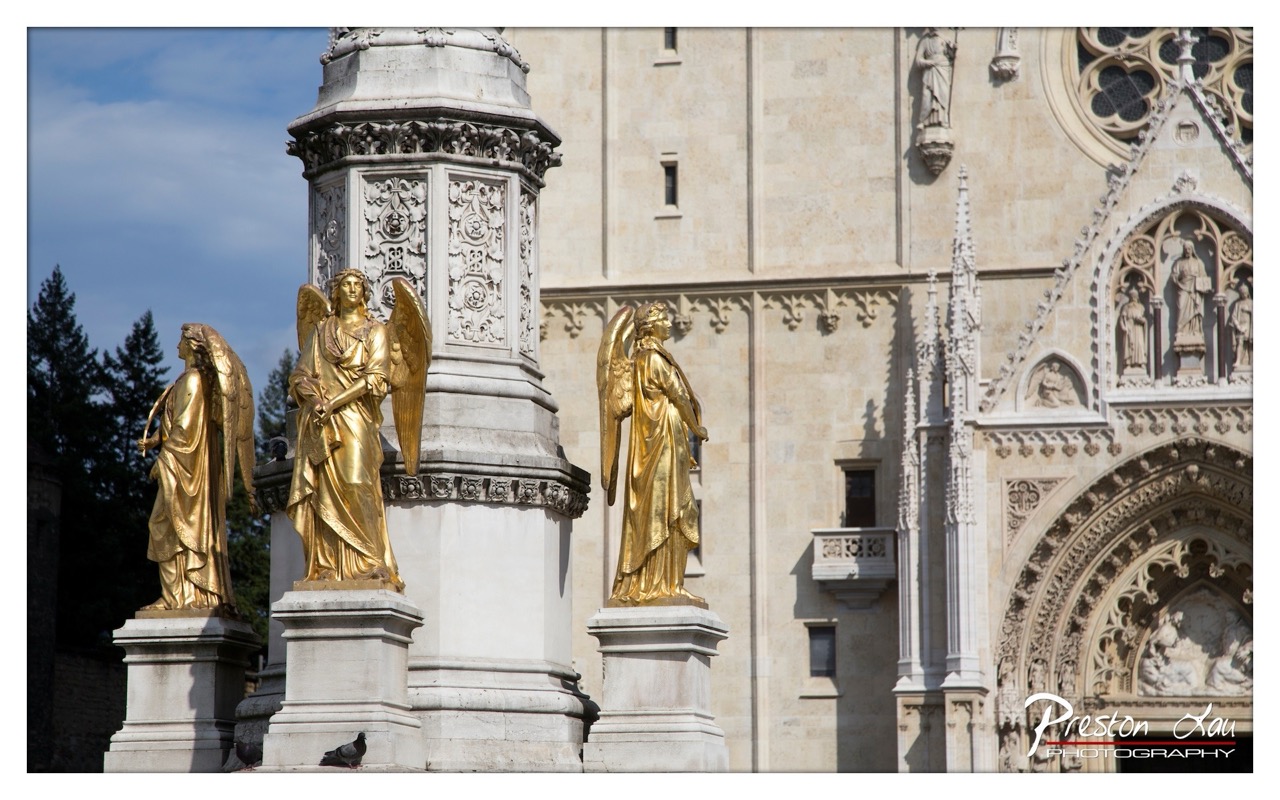

1. Overall Rating (0–10) — 7.8
This photograph captures the grandeur of a Gothic cathedral with striking clarity, where golden angel statues stand as luminous sentinels against the pale stone architecture. The interplay of light and shadow enhances the textures and intricate carvings, evoking a sense of reverence and timelessness. While the image is visually rich and compositionally strong, the slightly overexposed sky and uneven lighting temper its overall harmony, preventing it from achieving a more transcendent quality.
2. Composition (0–10) — 8.0
The statues are arranged with deliberate symmetry, creating a balanced visual rhythm, while the cathedral’s vertical lines guide the eye upward, enhancing the sense of scale. The inclusion of the pigeons at the base adds a subtle touch of life and grounding, though the left edge feels slightly cluttered.
3. Lighting (0–10) — 7.5
The bright, directional sunlight accentuates the golden patina of the angels and casts deep, dramatic shadows across the façade, enriching the image with contrast. However, the sky is slightly overexposed, losing detail in the clouds and creating a harsh edge against the stone.
4. Color & Tone (0–10) — 8.0
The warm gold of the statues contrasts beautifully with the cool, pale stone and the blue sky, creating a rich, harmonious palette. The tonal range is strong, with deep shadows and bright highlights enhancing the three-dimensionality of the scene.
5. Creativity (0–10) — 7.0
The image successfully blends religious symbolism with architectural grandeur, presenting a moment of stillness and devotion. While the subject is classic and well-photographed, the approach leans toward documentation rather than bold reinterpretation, limiting its conceptual originality.
6. Technical Quality (0–10) — 8.5
Sharp focus across the frame, precise detail in the statues and stonework, and clean exposure control reflect strong technical execution. The watermark is unobtrusive and professionally placed.
7. Emotional Impact (0–10) — 8.0
The image evokes a quiet awe, drawing the viewer into a contemplative space where history, faith, and art converge. The golden figures, bathed in light, feel almost divine, inviting a moment of reflection and emotional resonance.
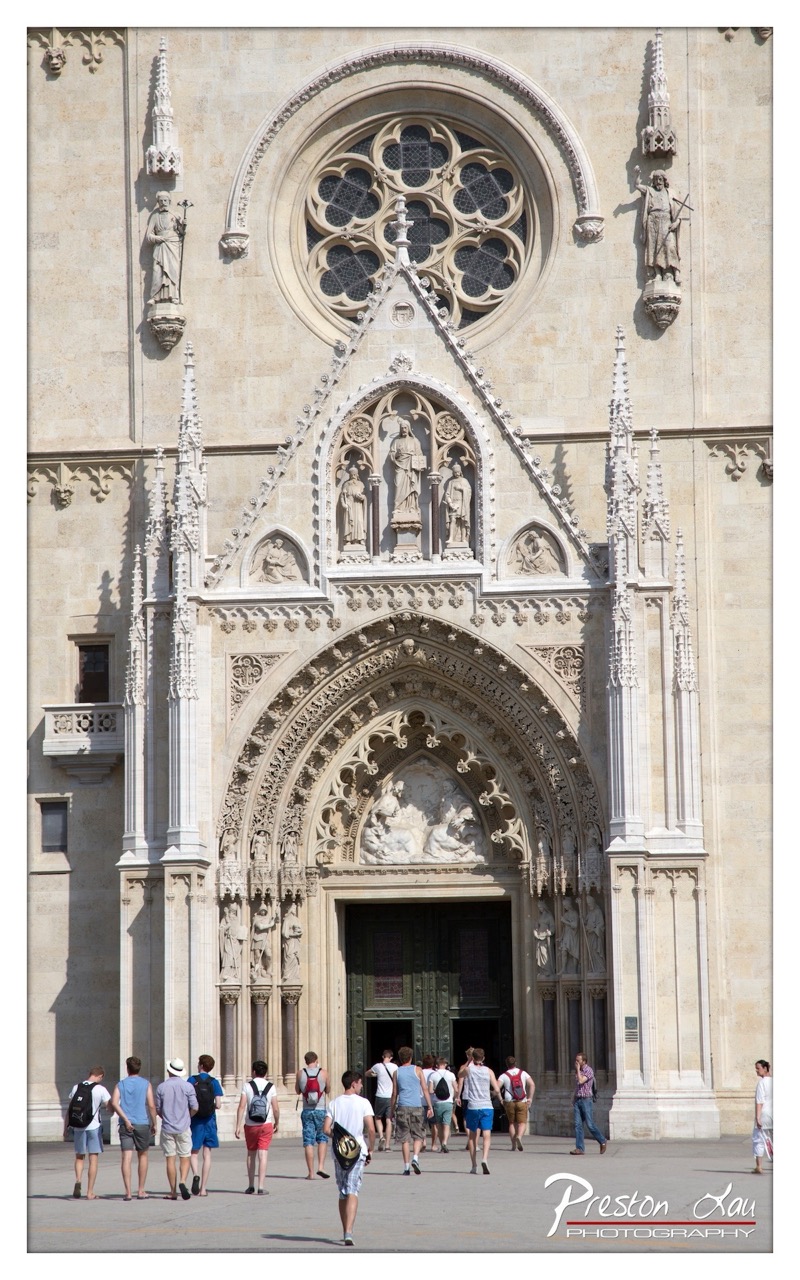

1. Overall Rating (0–10) — 7.5
This photograph captures the grandeur of a Gothic cathedral with striking architectural detail and a sense of human scale. The interplay between the monumental stonework and the casual tourists adds narrative depth, grounding the sacred structure in everyday life. While the bright daylight flattens some of the finer textures, the image successfully conveys both the awe-inspiring craftsmanship and the timeless presence of the building in a modern urban setting.
2. Composition (0–10) — 8.0
The cathedral’s vertical lines draw the eye upward, emphasizing its height and intricacy. The placement of the group of people at the base creates a strong sense of scale, while the central alignment of the entrance and rose window offers symmetry and balance.
3. Lighting (0–10) — 7.0
The bright, direct sunlight highlights the textures of the stone and casts sharp shadows that accentuate the architectural features. However, the overhead sun creates some overexposed highlights on the facade, slightly diminishing the depth in the upper sections.
4. Color & Tone (0–10) — 7.5
The warm, neutral tones of the limestone provide a classic, timeless palette, complemented by the subtle contrast of the dark green doors and the varied colors of the visitors’ clothing. The overall tonal range is balanced, with enough contrast to keep the image visually engaging.
5. Creativity (0–10) — 7.0
The image combines architectural reverence with a candid, human element, offering a fresh perspective on a historic site. The inclusion of tourists as a compositional device adds narrative interest, suggesting continuity between past and present.
6. Technical Quality (0–10) — 8.0
The photograph is sharp and well-focused, with clear detail throughout the facade. The dynamic range is handled well, though some loss of detail in the bright areas suggests slight overexposure in the highlights.
7. Emotional Impact (0–10) — 7.0
The image evokes a sense of wonder and reverence, enhanced by the quiet presence of people moving through the sacred space. It invites contemplation of history, art, and the enduring role of architecture in public life.
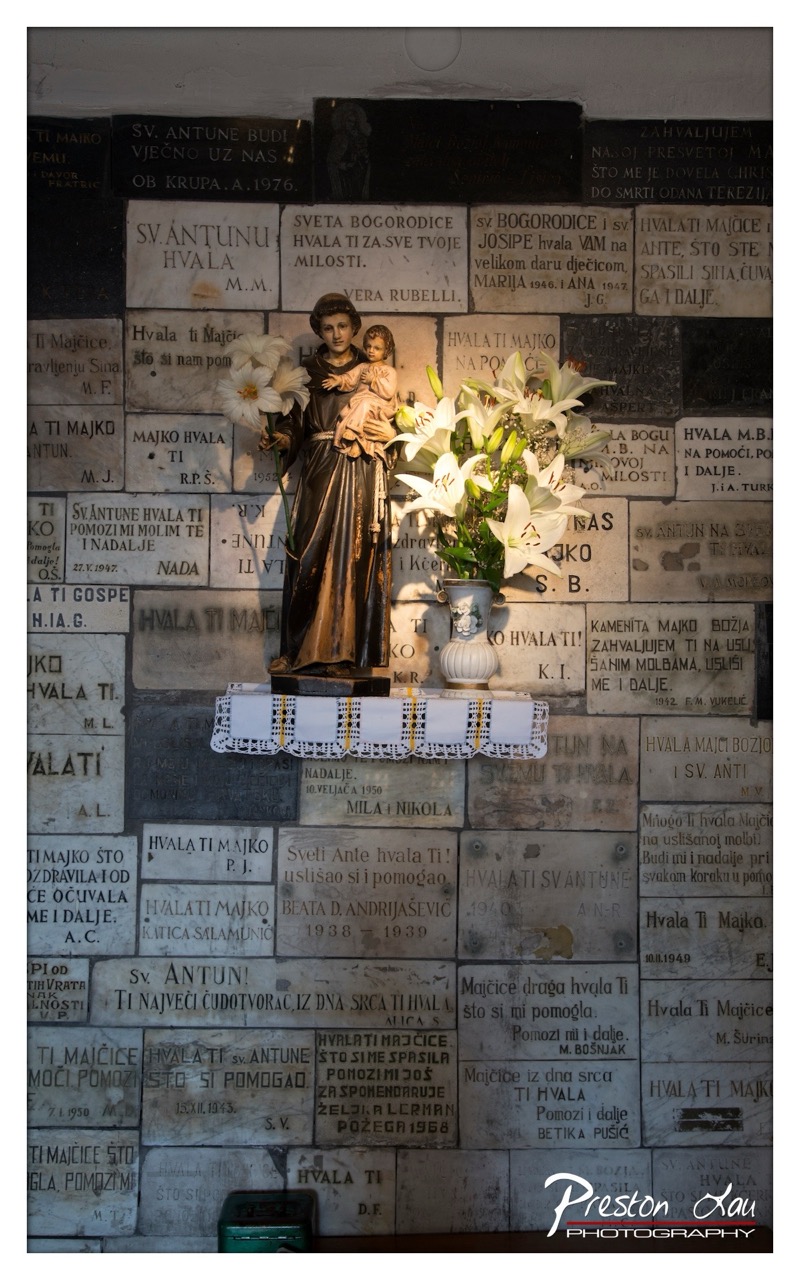

1. Overall Rating (0–10) — 7.5
This photograph captures a deeply reverent and intimate moment within a sacred space, where devotion is expressed through both devotion and memory. The central statue of Saint Anthony, cradling the Christ child, is beautifully framed by a cascade of white lilies and a lace-trimmed cloth, evoking purity and spiritual devotion. The surrounding plaques, inscribed with heartfelt prayers and dates, add layers of human connection and collective memory, creating a poignant narrative of faith and remembrance. While the composition is rich in symbolism and emotional weight, the visual density of the inscriptions risks overwhelming the viewer’s focus, slightly diminishing the image’s clarity.
2. Composition (0–10) — 7.0
The statue is centered and well-framed, drawing the eye immediately to the religious icon. The surrounding plaques create a textured, layered background that enhances depth, though the high density of text introduces visual clutter. The placement of the lilies and vase balances the composition, adding softness and natural form to counter the rigid stone.
3. Lighting (0–10) — 7.5
The lighting is soft and directional, likely from a natural source to the side, creating subtle shadows that enhance the three-dimensionality of the statue and the texture of the stone plaques. The highlights on the white lilies and the reflective surface of the statue add depth and warmth, while the shadows lend a contemplative mood.
4. Color & Tone (0–10) — 7.0
The palette is subdued and harmonious, dominated by earthy tones of stone and the soft white of the lilies, which stand out as a focal point. The warm glow on the statue and flowers contrasts gently with the cool gray of the background, enhancing the spiritual atmosphere. The color balance is natural, with a slight warmth that enhances the sense of reverence.
5. Creativity (0–10) — 8.0
The image is creatively rich in narrative, blending religious iconography with personal memorialization. The juxtaposition of the sacred statue with the personal prayers transforms the space into a living archive of faith. The thoughtful inclusion of the flowers and lace adds a touch of domestic warmth, elevating the scene from a mere record to a deeply personal and artistic statement.
6. Technical Quality (0–10) — 8.0
The image is sharp and well-focused, particularly on the statue and flowers. The depth of field is appropriate, keeping the central subject clear while softly blurring the background text to guide attention. The exposure is balanced, with no harsh highlights or lost shadows, and the details in both the stone and the delicate lace are well-preserved.
7. Emotional Impact (0–10) — 8.5
The photograph evokes a profound sense of reverence, peace, and continuity of faith. The personal prayers, the tender statue, and the fresh lilies together create a powerful emotional resonance, suggesting hope, memory, and devotion. The viewer is invited to reflect on the quiet strength of faith as lived through generations.
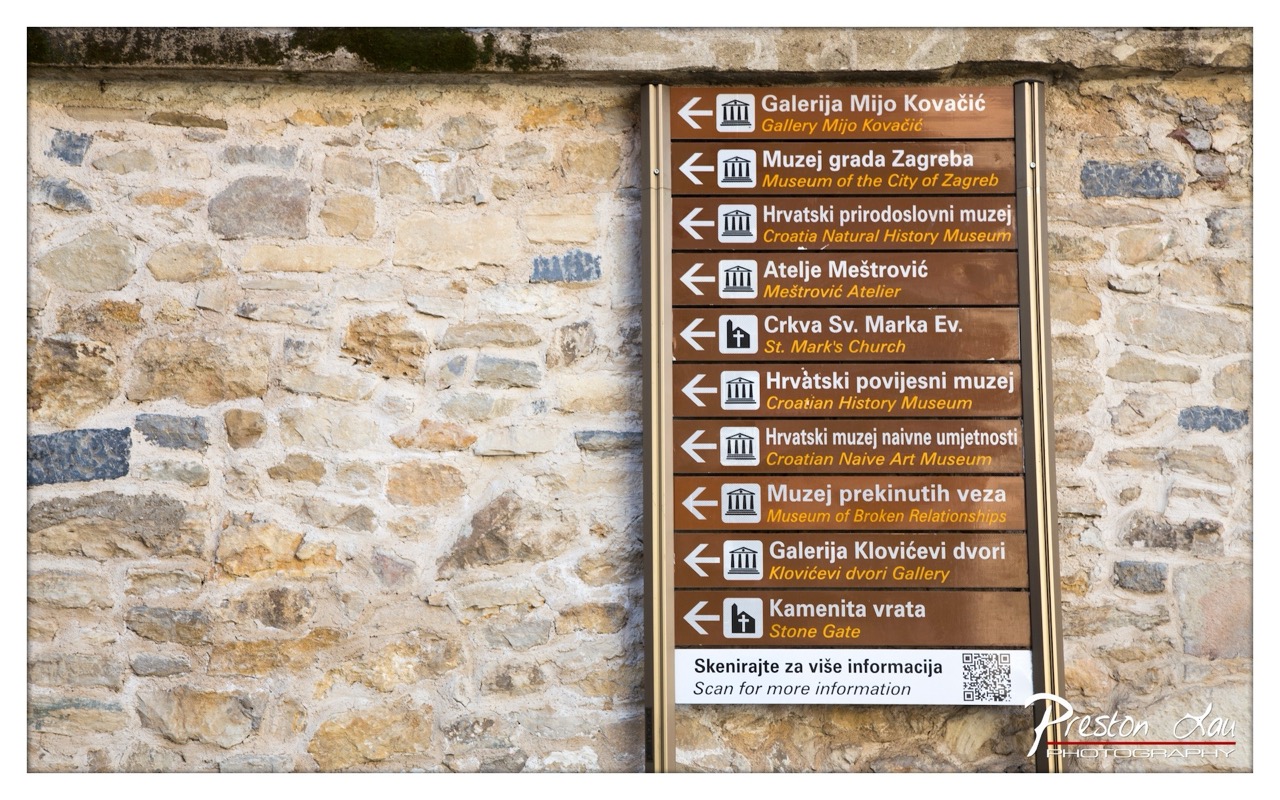

1. Overall Rating (0–10) — 6.0
This photograph captures a functional yet visually compelling directional sign embedded in a historic stone wall, blending contemporary information with architectural texture. The juxtaposition of the clean, modern signage against the weathered masonry creates a subtle narrative of continuity between past and present. While the image is well-composed and informative, its utilitarian nature limits its artistic impact, and the lack of human presence keeps the scene emotionally distant.
2. Composition (0–10) — 7.0
The sign is centered and vertically aligned, creating a strong focal point against the asymmetrical stone wall. The left negative space balances the right side, enhancing visual harmony while emphasizing the sign's role as a guide.
3. Lighting (0–10) — 7.5
Even, natural daylight illuminates the scene without harsh shadows, preserving the texture of the stone and ensuring legibility of the text. The soft light enhances the material contrast between the sign and the wall.
4. Color & Tone (0–10) — 6.5
The earthy tones of the stone blend naturally with the brown sign, creating a cohesive palette. However, the color temperature is neutral, lending a slightly flat quality that could benefit from a warmer or cooler cast to heighten mood.
5. Creativity (0–10) — 6.0
The image functions as both a documentary and a conceptual piece, using the sign as a metaphor for history and direction. While the idea is strong, the execution leans toward conventional travel photography rather than pushing artistic boundaries.
6. Technical Quality (0–10) — 8.0
Sharp focus, clear detail, and proper exposure demonstrate strong technical control. The QR code and text remain perfectly legible, indicating a high level of precision.
7. Emotional Impact (0–10) — 5.0
The photograph evokes curiosity and a sense of place but lacks deeper emotional resonance. The absence of people or narrative context keeps the viewer in a passive, observational role.
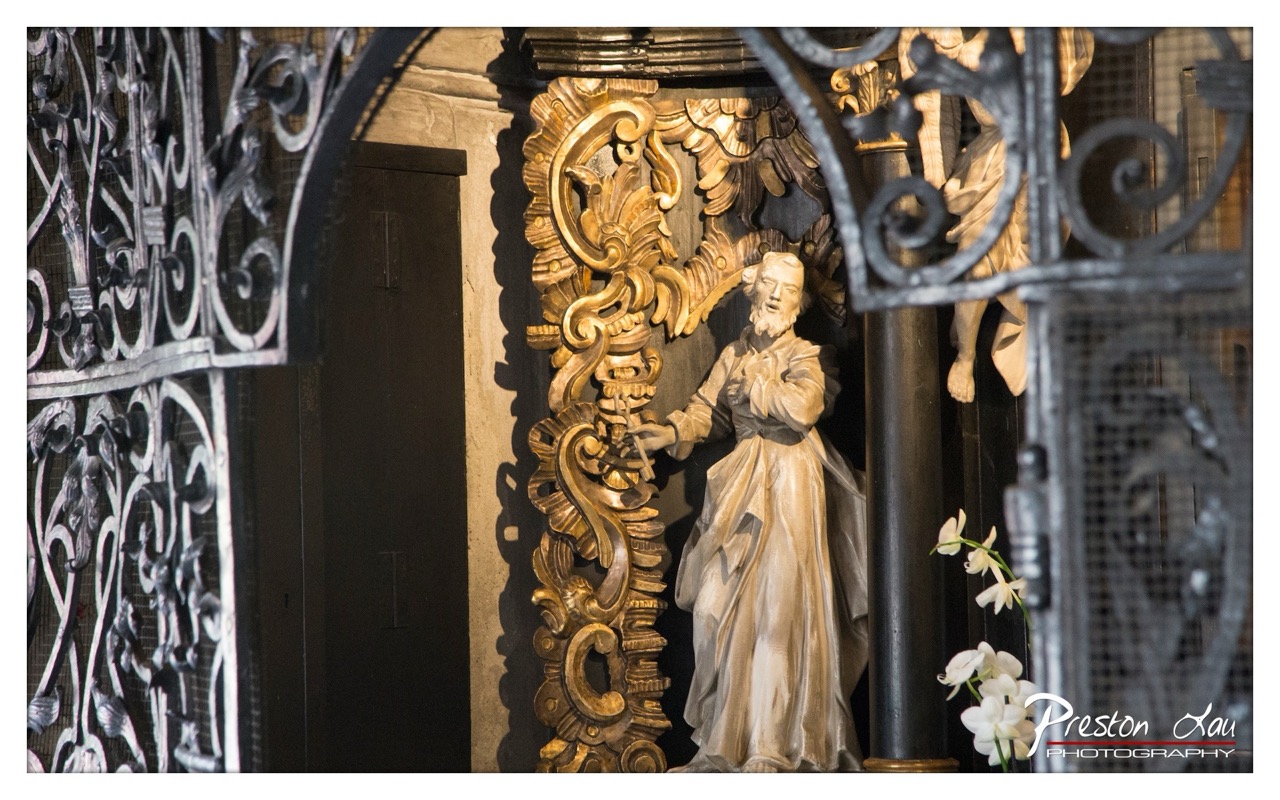

1. Overall Rating (0–10) — 7.5
This photograph captures a moment of quiet reverence within a sacred space, where light and shadow play across intricate craftsmanship. The interplay of the ornate golden carving, the solemn statue, and the dark wrought iron creates a rich, layered narrative of faith and artistry. While the framing feels slightly cluttered by the foreground elements, the image succeeds in conveying a sense of historical depth and spiritual stillness, though it could benefit from tighter focus and more deliberate composition.
2. Composition (0–10) — 6.0
The statue is centered but partially obscured by the dark iron gate in the foreground, creating a sense of depth but also visual distraction. The diagonal lines of the gate frame the image unevenly, pulling attention away from the central subject.
3. Lighting (0–10) — 7.0
Dramatic side lighting highlights the textures and details of the golden carving and the statue’s drapery, creating strong contrast and a theatrical mood. The light enhances the three-dimensionality of the sculpture while casting deep shadows that add mystery.
4. Color & Tone (0–10) — 7.5
The warm gold of the carving contrasts beautifully with the cool tones of the iron and the neutral stone, creating a balanced and harmonious palette. The white orchids in the corner provide a soft, delicate accent that complements the solemnity of the scene.
5. Creativity (0–10) — 7.0
The photographer uses the gate as a natural frame, suggesting a view into a hidden sanctuary. This layered approach adds narrative depth, though the composition could be more intentional in guiding the viewer’s eye.
6. Technical Quality (0–10) — 8.0
The image is sharp and well-focused, particularly on the central statue and the golden ornamentation. The depth of field is controlled effectively, with the foreground and background slightly softened to emphasize the subject.
7. Emotional Impact (0–10) — 7.5
The photograph evokes a sense of quiet contemplation and reverence, drawing the viewer into a moment of stillness within a sacred environment. The interplay of light, texture, and framing enhances the spiritual atmosphere, inviting reflection.
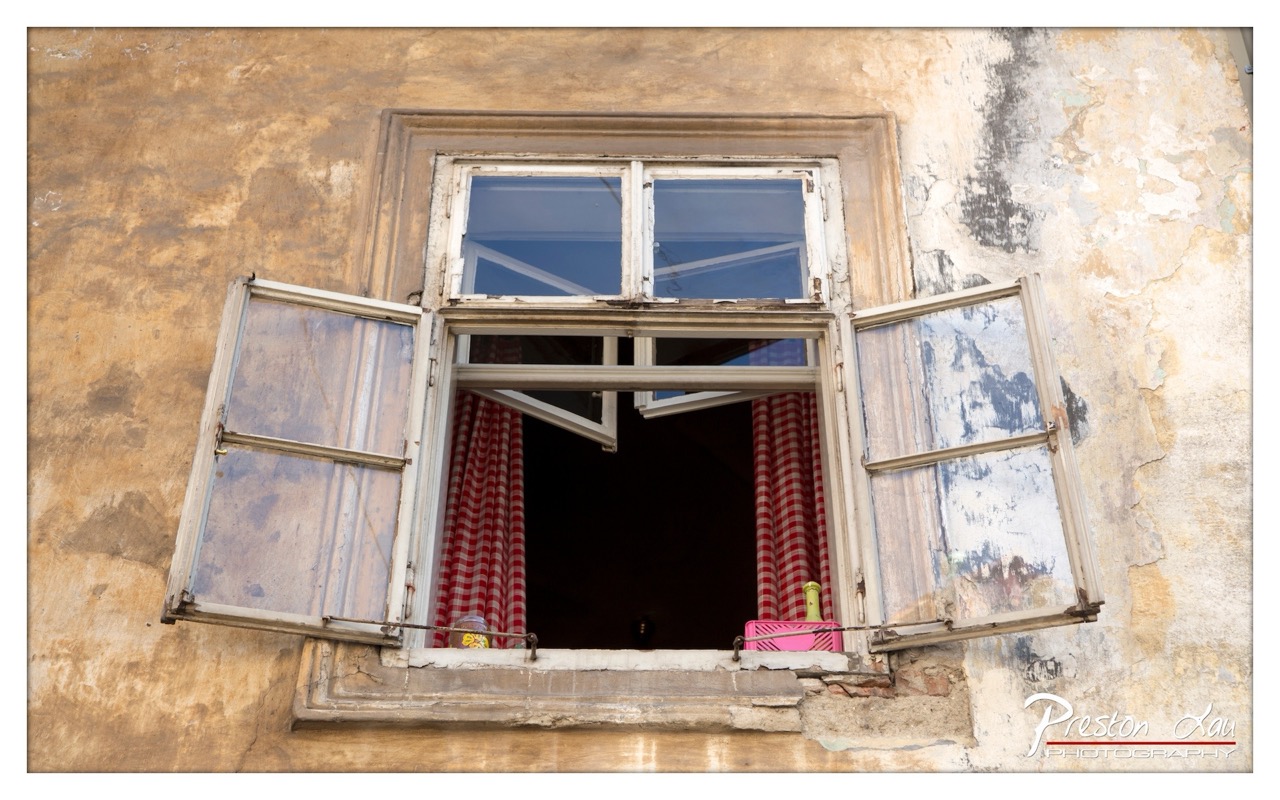

1. Overall Rating (0–10) — 7.0
This photograph captures a quiet moment of lived-in charm, where the weathered texture of the wall and the simple red-and-white checkered curtain tell a story of time and resilience. The contrast between the aged exterior and the glimpse of domestic life inside creates a compelling narrative, though the composition feels slightly unbalanced, and the lighting lacks depth. It’s a strong observational piece that invites curiosity, but it stops short of emotional transcendence.
2. Composition (0–10) — 6.5
The window is centrally framed, but the asymmetrical placement of the open shutters and the uneven wall surface create visual tension. A tighter crop or slight adjustment could enhance symmetry and focus.
3. Lighting (0–10) — 6.0
Natural daylight illuminates the scene evenly, but the deep shadow inside the room flattens the interior, reducing the sense of depth. The bright sky outside creates a slight overexposure in the glass panes.
4. Color & Tone (0–10) — 7.0
The warm, earthy tones of the peeling wall contrast effectively with the bold red and white of the curtain. The muted palette gives the image a timeless, rustic quality, though the color saturation could be slightly more balanced.
5. Creativity (0–10) — 7.0
The image succeeds in capturing a slice of everyday life with a sense of authenticity. The juxtaposition of decay and domestic warmth adds narrative depth, and the photographer’s choice to include subtle details like the pink basket and green bottle enhances the story.
6. Technical Quality (0–10) — 8.0
Sharp focus across the frame and clean detail in the textures of the wall and window are well executed. The exposure is generally accurate, though the highlights on the glass could be slightly tamed.
7. Emotional Impact (0–10) — 6.5
There’s a quiet melancholy in the aged facade, softened by the warmth of the curtain and small household items. The image evokes a sense of nostalgia and invites reflection on the passage of time, though the emotional resonance remains restrained.
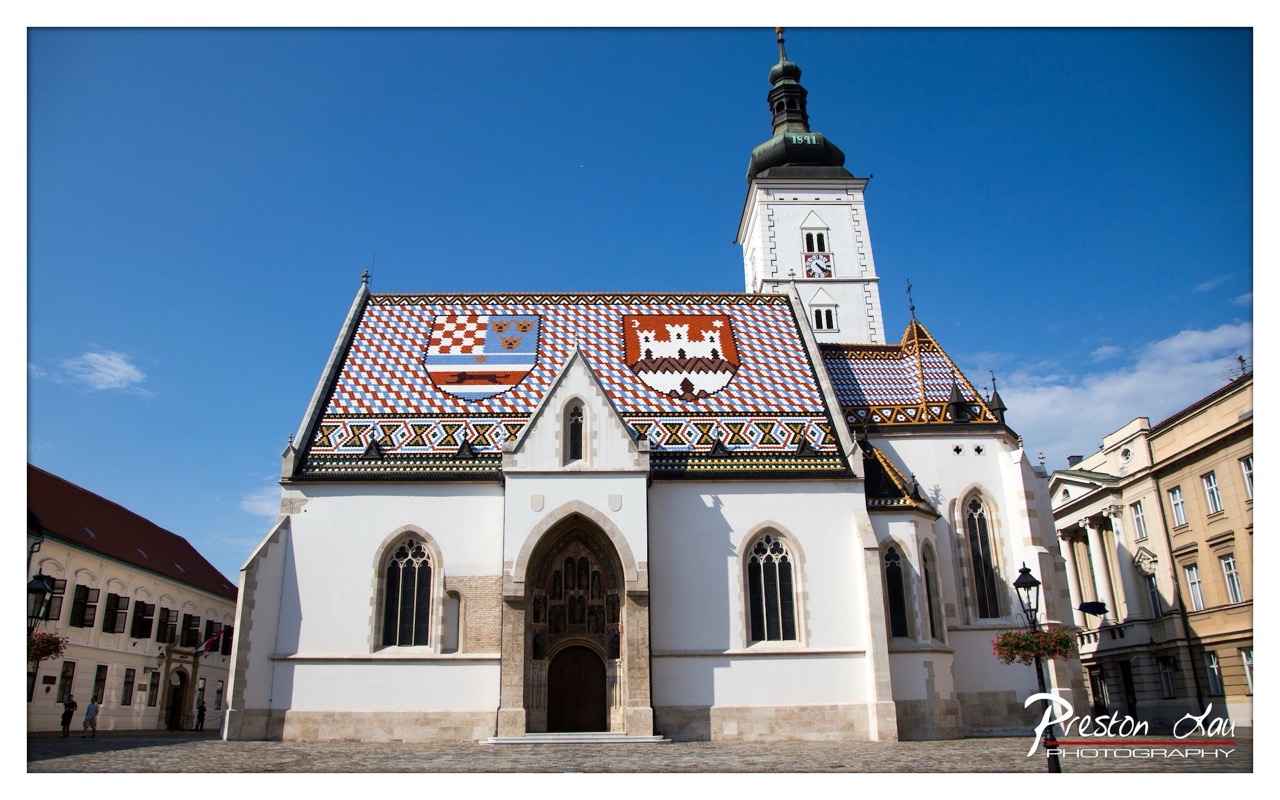

1. Overall Rating (0–10) — 8.0
This photograph captures the grandeur of a historic Croatian church under a vivid blue sky, where architectural detail and cultural symbolism converge with striking clarity. The vibrant, patterned roof tiles—featuring the Croatian coat of arms—serve as a bold visual anchor, while the crisp sunlight enhances the structure’s white façade and Gothic elements. Though the composition is strong and the subject rich with narrative, the wide framing slightly dilutes the intimacy of the moment, leaving the viewer with a sense of distance despite the image’s technical excellence.
2. Composition (0–10) — 8.0
The church is centered with strong symmetry, drawing the eye upward toward the tower and sky. The inclusion of adjacent buildings and a few figures adds context and scale, while the low-angle perspective enhances the structure’s monumentality without overwhelming the frame.
3. Lighting (0–10) — 9.0
Bright, direct sunlight casts sharp shadows and enhances the contrast between the white walls and the deep blue sky. The even illumination brings out the textures and colors of the roof tiles, while the clean light gives the scene a crisp, celebratory tone.
4. Color & Tone (0–10) — 8.5
The palette is rich and balanced, with the warm terracotta and cobalt hues of the roof tiles contrasting beautifully against the cool blue sky and neutral tones of the stone. The color harmony is strong, with the red, white, and blue of the Croatian heraldry creating a visually cohesive and patriotic feel.
5. Creativity (0–10) — 8.0
The photograph elevates a familiar architectural subject through a bold color scheme and strong visual storytelling. The use of the roof’s heraldic patterns as a focal point adds cultural depth and a sense of place, transforming the image from a mere record into a celebration of heritage.
6. Technical Quality (0–10) — 9.0
The image is sharp, well-exposed, and free of noise. The focus is precise across the main structure, and the dynamic range effectively captures both the bright sky and the detailed façade without losing shadow detail.
7. Emotional Impact (0–10) — 7.5
The photograph evokes a sense of pride and reverence for history and tradition. The bright, clear day and the proud display of national symbols create a mood of optimism and cultural continuity, inviting the viewer to reflect on the enduring legacy of the past.
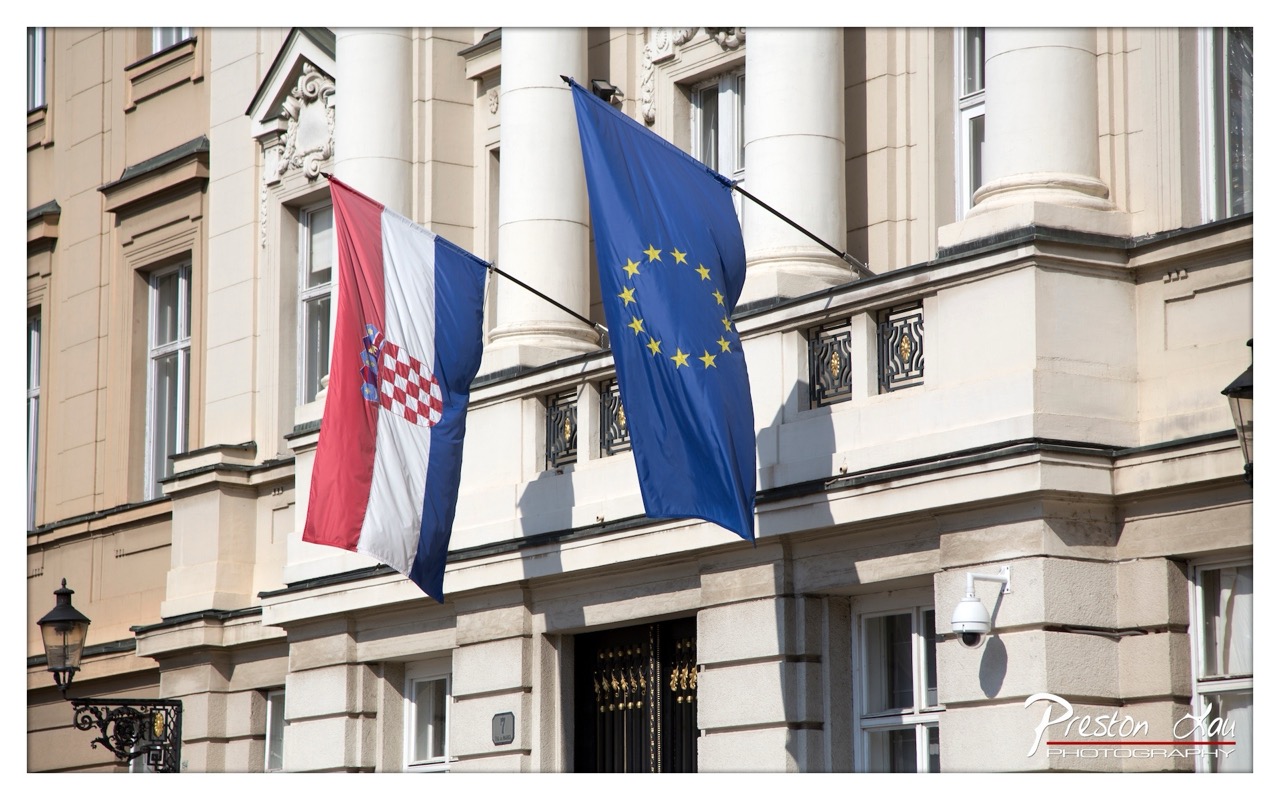

1. Overall Rating (0–10) — 7.0
This photograph captures a powerful symbolic juxtaposition between national identity and European integration, set against the stately backdrop of a classical building. The bold placement of the Croatian and EU flags conveys a sense of pride and political transition, while the clean lines and architectural detail lend gravitas to the image. Though the composition is straightforward, the visual tension between tradition and modernity gives the photograph a compelling narrative edge.
2. Composition (0–10) — 7.0
The flags are well-centered and balanced, creating a strong diagonal line that draws the eye across the frame. The architectural elements provide a sense of structure and depth, while the inclusion of the building’s entrance and signage grounds the image in a specific place.
3. Lighting (0–10) — 8.0
Natural daylight illuminates the scene evenly, enhancing the vividness of the flags and the crisp texture of the building’s stonework. The shadows are soft and directional, adding dimension without overpowering the image.
4. Color & Tone (0–10) — 8.0
The rich blue of the EU flag and the bold red, white, and blue of the Croatian flag create a striking contrast against the neutral beige facade. The color palette is harmonious and impactful, with a slight cool tone that reinforces the formal mood.
5. Creativity (0–10) — 7.0
The image is conceptually strong, using the juxtaposition of flags to tell a story of national identity within a broader European context. While not radically original in execution, it effectively communicates a timely and meaningful theme.
6. Technical Quality (0–10) — 8.0
The image is sharp and well-focused, with clean details in both the flags and the building’s ornate features. The exposure is balanced, and the resolution is high, allowing for clear visibility of textures and signage.
7. Emotional Impact (0–10) — 6.5
The photograph evokes a sense of pride and forward-looking purpose, but the emotional resonance is somewhat restrained by its documentary tone. It invites reflection on political change, but doesn’t elicit a strong personal response.
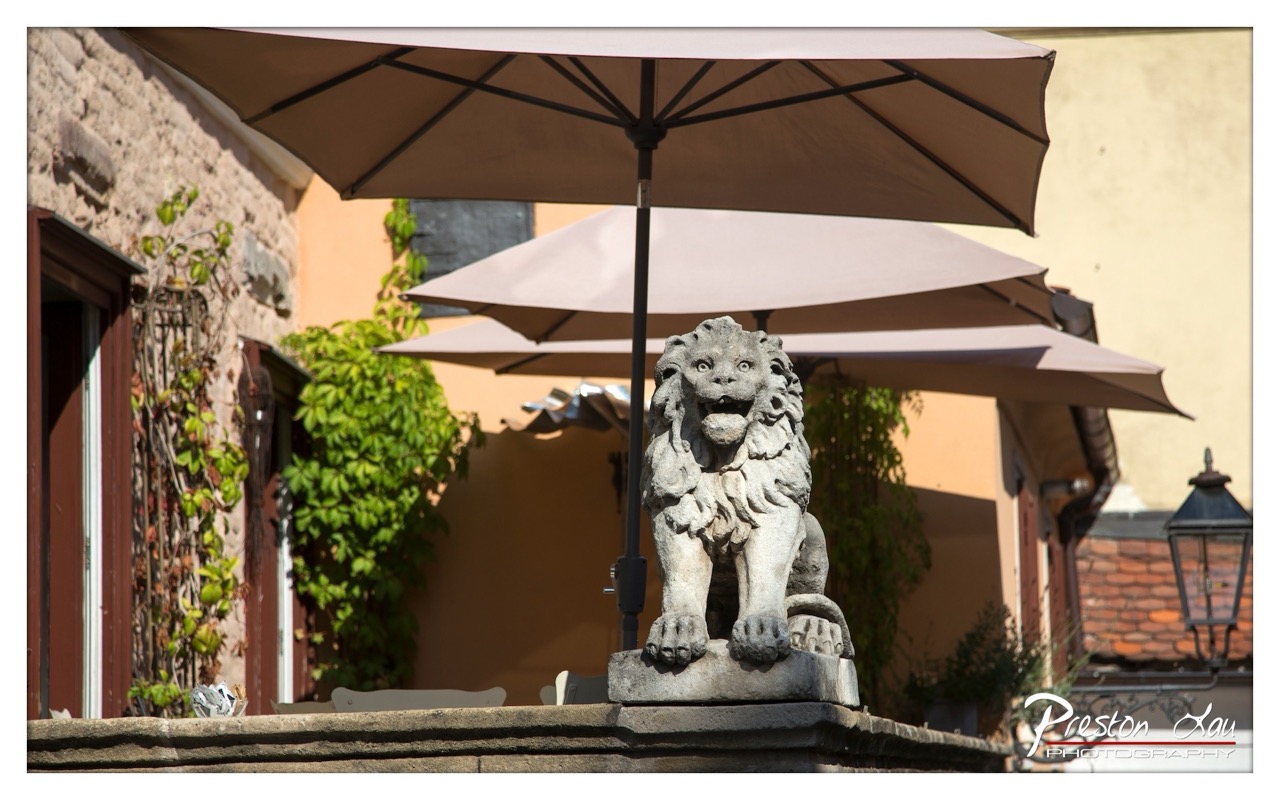

1. Overall Rating (0–10) — 7.0
This photograph captures a quiet moment in a sun-drenched European alley, where the weathered stone lion stands as a silent sentinel amidst the soft textures of ivy and fabric. The interplay of light and shadow, combined with the layered depth of the scene, gives it a timeless, almost cinematic quality. While the composition is strong and the subject compelling, the slightly cluttered background and flat lighting prevent it from achieving greater visual harmony.
2. Composition (0–10) — 7.0
The lion statue is well-placed as a focal point, with the umbrellas creating leading lines that draw the eye toward it. The layering of elements—stone, greenery, and architecture—adds depth, though the off-center framing and overlapping forms create a slight visual tension.
3. Lighting (0–10) — 6.5
The sunlight is bright but diffused, casting soft shadows that emphasize texture without harsh contrast. The overcast glow of the umbrellas creates a gentle gradient, enhancing the quiet mood, though a more directional light could have added drama.
4. Color & Tone (0–10) — 6.0
The palette is warm and cohesive, with earthy tones in the stone and walls complemented by the green of the vines. However, the colors feel slightly muted, with a slight yellow cast that softens the vibrancy and reduces contrast.
5. Creativity (0–10) — 7.0
The image succeeds in blending the historic with the everyday, turning a simple street scene into a narrative moment. The choice to frame the lion as a guardian figure amid modern café umbrellas introduces a subtle juxtaposition of time and place.
6. Technical Quality (0–10) — 7.5
Sharp focus on the lion statue ensures clarity, and the exposure is well-balanced. The lens appears to capture detail with precision, though a slightly tighter crop could have enhanced the visual impact.
7. Emotional Impact (0–10) — 6.5
The photograph evokes a sense of nostalgia and calm, inviting the viewer to imagine the stories behind the quiet courtyard. While the emotion is understated, the stillness of the scene allows for contemplation and a quiet connection to place.
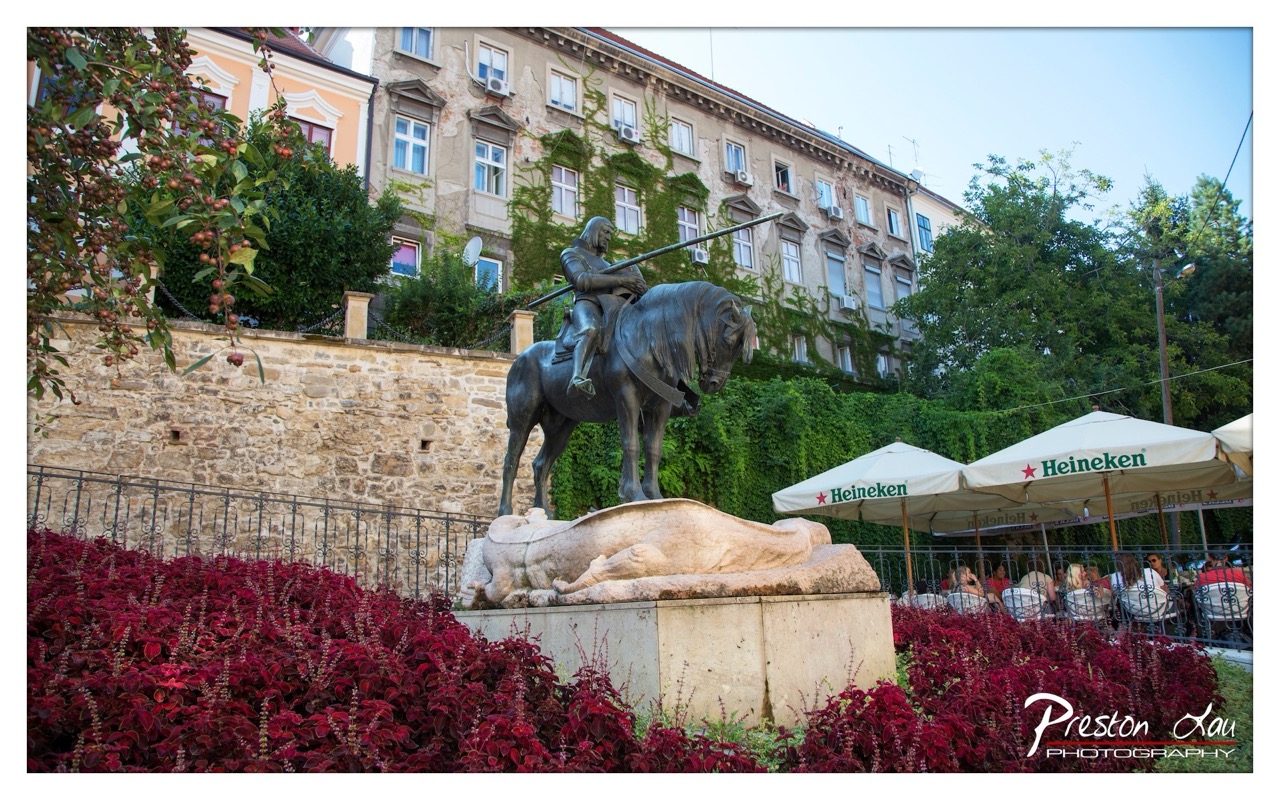

1. Overall Rating (0–10) — 7.0
This photograph captures a striking juxtaposition of history and modernity, where a heroic equestrian statue stands amidst vibrant red foliage and contemporary café life. The contrast between the aged stone and the bustling outdoor seating under Heineken umbrellas creates a layered narrative, suggesting the enduring presence of the past in everyday urban life. While the composition is visually rich, the inclusion of commercial branding slightly undermines the historical gravitas of the monument.
2. Composition (0–10) — 6.5
The statue is well-centered, drawing the eye as the focal point, but the framing feels slightly cluttered. The overhanging tree branches and the café umbrellas create visual distractions that interrupt the monument’s dominance in the scene.
3. Lighting (0–10) — 7.0
The soft, natural light of late afternoon enhances the textures of the stone and bronze, casting gentle shadows that give depth to the sculpture. The sky is evenly lit, preventing harsh contrasts and allowing the details of the building and foliage to remain visible.
4. Color & Tone (0–10) — 8.0
The rich, saturated reds of the coleus plants create a powerful visual contrast against the green ivy and the neutral tones of the stone and building. The warm color palette enhances the scene’s vibrancy and gives it a lively, inviting atmosphere.
5. Creativity (0–10) — 7.5
The image successfully blends historical and contemporary elements in a single frame, creating a thought-provoking commentary on time and place. The inclusion of the café adds a layer of narrative, inviting viewers to consider how public monuments coexist with modern leisure.
6. Technical Quality (0–10) — 8.0
The image is sharp and well-focused, with clear detail in both the foreground and background. The depth of field is appropriately managed, allowing the statue to stand out while still maintaining context.
7. Emotional Impact (0–10) — 7.0
The photograph evokes a sense of quiet contemplation, inviting the viewer to reflect on the passage of time and the continuity of urban life. The juxtaposition of solemn monumentality and relaxed café culture creates a subtle emotional tension that lingers.
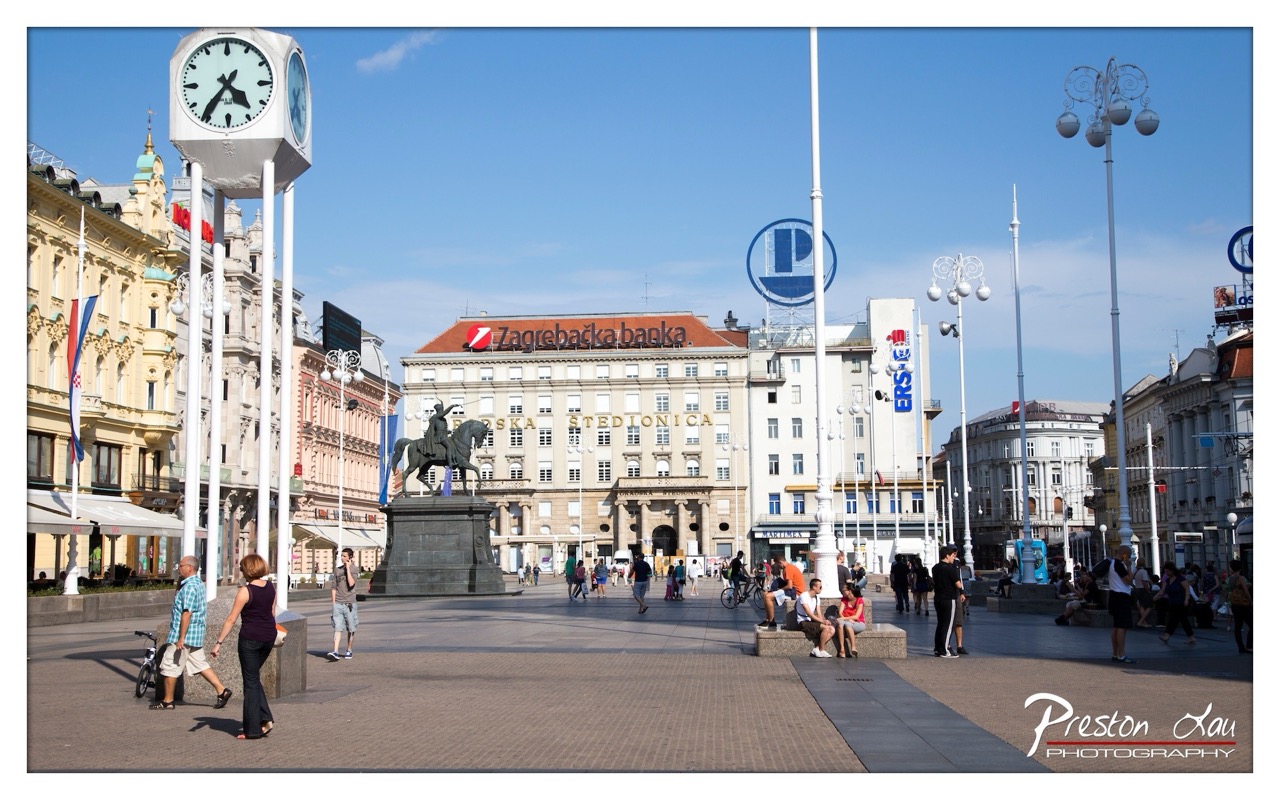

1. Overall Rating (0–10) — 7.0
This photograph captures the vibrant energy of a European city square under a clear blue sky, where history and modernity intersect in a dynamic urban landscape. The composition effectively balances architectural grandeur, public activity, and symbolic elements like the clock and equestrian statue, creating a scene that feels both lively and timeless. While the image is rich in detail and context, the slightly overexposed sky and cluttered signage detract from its visual harmony, preventing it from achieving a more refined aesthetic.
2. Composition (0–10) — 7.5
The wide-angle perspective frames the square with strong leading lines from the clock tower and street lamps, guiding the eye toward the central monument and the Zagrebačka banka building. The placement of the statue and people creates a sense of depth and scale, though the scattered composition slightly disrupts visual cohesion.
3. Lighting (0–10) — 7.0
Bright, direct sunlight enhances the clarity and saturation of the scene, casting defined shadows that add dimension to the architecture and figures. The clear sky provides excellent exposure, though the intense light causes some loss of detail in the white façades and overexposes the upper portion of the image.
4. Color & Tone (0–10) — 7.5
The palette is dominated by warm earth tones in the buildings and pavement, contrasted by the cool blue of the sky and the crisp white of the clock tower. The colors are vibrant and well-balanced, with a natural warmth that enhances the inviting, sunlit atmosphere of the square.
5. Creativity (0–10) — 6.5
The image successfully captures a moment of everyday life in a historically rich setting, blending documentary realism with an eye for urban storytelling. While not particularly experimental, the composition and timing convey a sense of place with authenticity and visual interest.
6. Technical Quality (0–10) — 8.0
The image is sharp and well-focused, with clean details throughout the architecture and people. The wide dynamic range allows for clear visibility of both bright and shadowed areas, though slight overexposure in the sky suggests minor technical limitations.
7. Emotional Impact (0–10) — 7.0
The photograph evokes a sense of openness and civic pride, capturing the quiet energy of daily life in a public space. The presence of people relaxing, walking, and interacting adds warmth and relatability, inviting the viewer to imagine themselves in the scene.


1. Overall Rating (0–10) — 7.0
This photograph captures a cozy, indulgent moment centered on a decadent coffee drink, evoking a sense of comfort and quiet pleasure. The shallow depth of field draws attention to the creamy layers and toppings, while the surrounding details—sugar packets, a crumpled napkin, and soft ambient light—suggest a candid, lived-in café scene. While the image is visually appealing and well-executed, it leans slightly toward the familiar, lacking the striking originality to elevate it beyond a pleasant snapshot.
2. Composition (0–10) — 7.0
The subject is well-placed off-center, creating a balanced and natural feel. The use of depth of field effectively isolates the coffee drink, while background elements add context without distracting.
3. Lighting (0–10) — 7.5
Soft, diffused lighting enhances the creamy textures and creates a warm, inviting atmosphere. The highlights on the glass and spoon add subtle dimension without harsh shadows.
4. Color & Tone (0–10) — 7.0
The warm beige and cream tones harmonize beautifully, supporting the cozy mood. The contrast between the dark chocolate and the white whipped cream adds visual interest, though the overall palette remains subdued.
5. Creativity (0–10) — 6.5
The image is conceptually straightforward but executed with care. The composition and lighting convey a narrative of simple pleasure, but the subject matter and staging feel familiar rather than groundbreaking.
6. Technical Quality (0–10) — 8.0
Sharp focus on the coffee drink, clean detail, and smooth background blur demonstrate strong technical control. The exposure is balanced, and the image is free of noise or artifacts.
7. Emotional Impact (0–10) — 7.5
The photograph evokes a sense of warmth and quiet indulgence, inviting the viewer to savor a peaceful pause. The intimate framing and familiar setting foster a personal connection, making the moment feel both relatable and comforting.
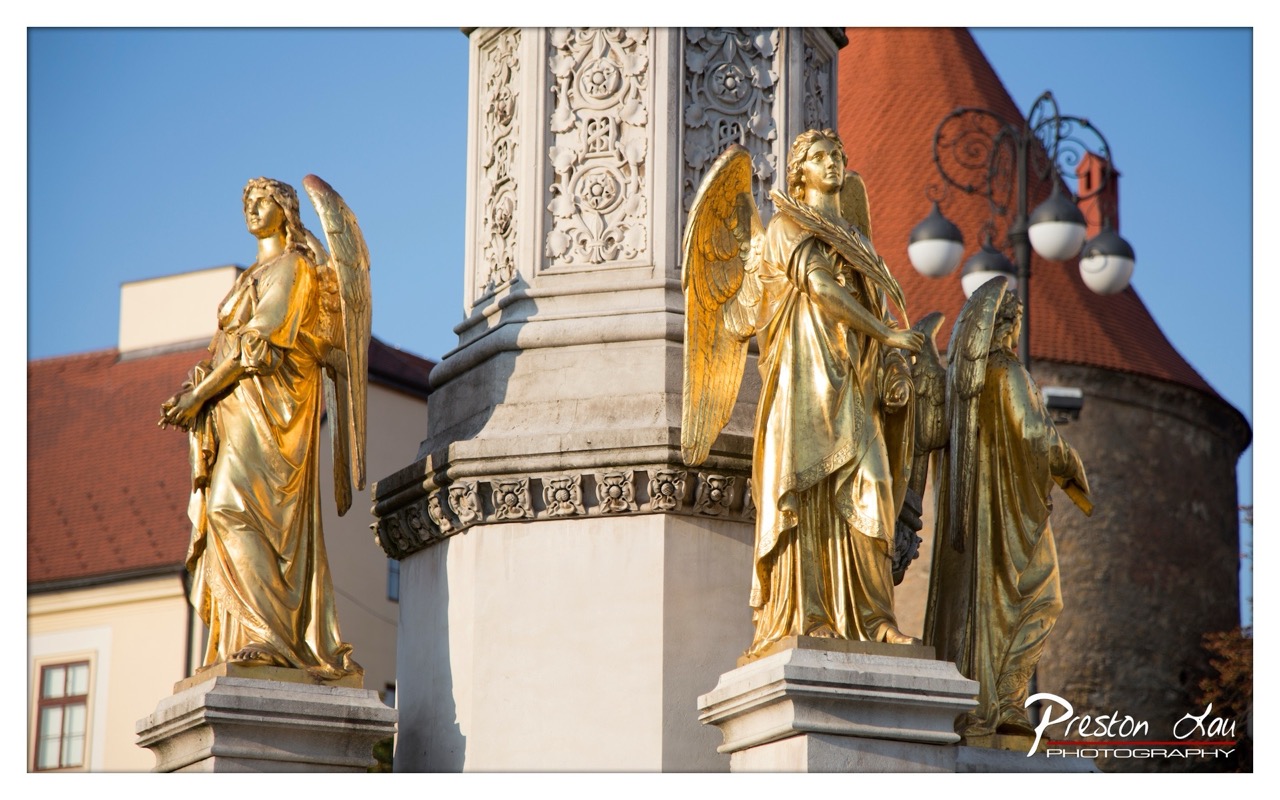

1. Overall Rating (0–10) — 8.0
This photograph captures a moment of quiet grandeur, where golden angelic figures stand in solemn vigil atop an ornate stone monument. The interplay of sunlight and shadow enhances the statues’ reflective surfaces, giving them a divine glow against the deep blue sky. While the composition is strong and the subject rich with symbolic weight, the slight overexposure in the sky and the busy background architecture prevent it from achieving full visual harmony.
2. Composition (0–10) — 8.0
The statues are well-framed with a balanced distribution across the image, creating a sense of symmetry and reverence. The use of leading lines from the stone column and the placement of the figures guide the eye naturally, while the inclusion of the lamppost and tower adds depth and context.
3. Lighting (0–10) — 8.5
The warm, directional sunlight enhances the golden tones of the statues, creating striking highlights and deep shadows that emphasize their three-dimensional form. The clear blue sky provides a clean backdrop, though the bright exposure slightly flattens the sky’s texture.
4. Color & Tone (0–10) — 8.0
The contrast between the rich gold of the statues and the cool blue of the sky creates a visually striking palette. The warm tones of the red-tiled roof add depth and warmth, while the neutral stone base grounds the image in a sense of historical permanence.
5. Creativity (0–10) — 7.5
The image captures a moment of timeless beauty with a strong sense of narrative—these statues seem to guard a sacred space. While the subject is traditional, the photographer’s choice of angle and timing imbues the scene with a contemplative, almost cinematic quality.
6. Technical Quality (0–10) — 8.5
Sharp focus across the statues ensures fine detail is visible, and the exposure is well-managed overall. The image is clean and well-defined, with only minor overexposure in the sky.
7. Emotional Impact (0–10) — 8.0
The photograph evokes a sense of reverence and awe, drawing the viewer into a quiet moment of reflection. The presence of the angels, bathed in golden light, suggests protection and transcendence, creating a deeply resonant and contemplative mood.
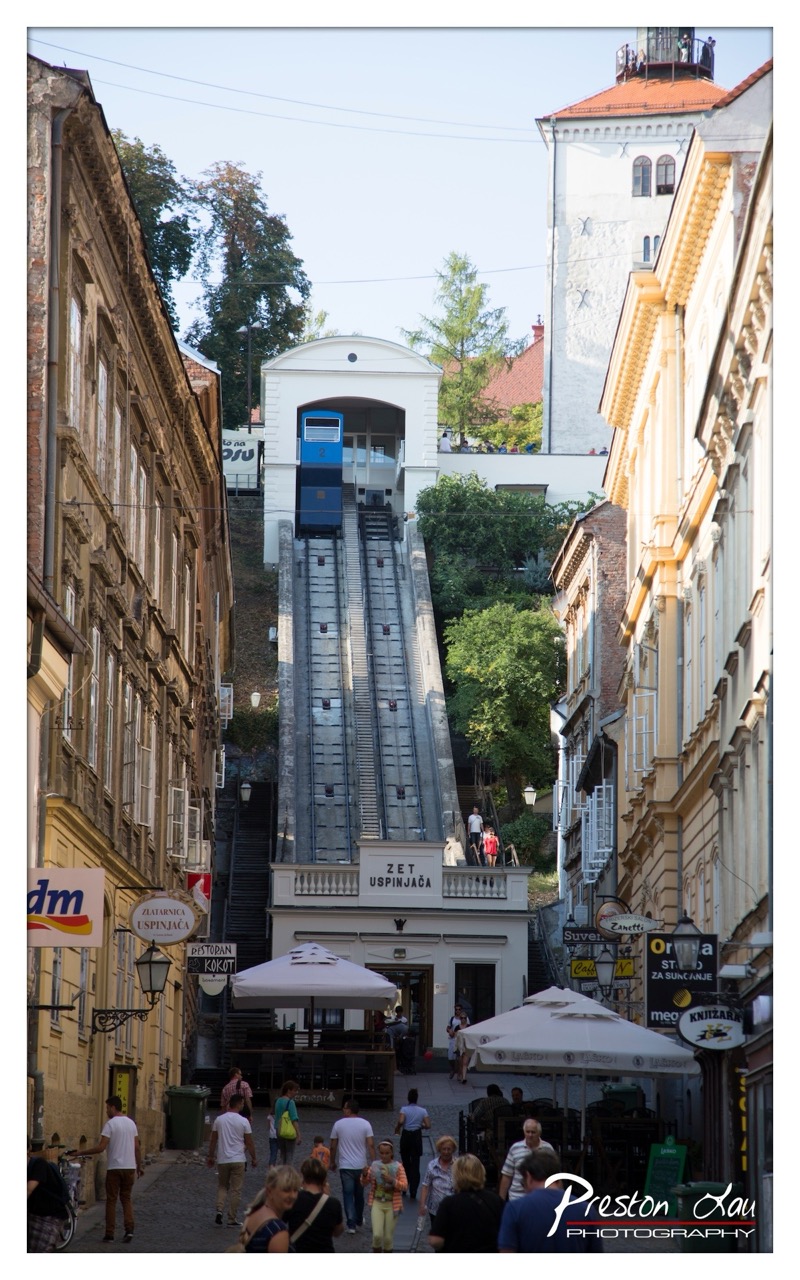

1. Overall Rating (0–10) — 7.0
This photograph captures the vibrant energy of a historic European street, centered on the iconic Zagreb Funicular. The upward composition draws the eye toward the moving car, creating a sense of ascent and connection between the old town and the hilltop. While the scene is rich in detail and narrative, the slight clutter of signage and people tempers its visual harmony, preventing it from feeling entirely composed.
2. Composition (0–10) — 7.5
The strong vertical alignment of the funicular creates a dynamic axis, guiding the viewer’s gaze from the bustling street to the elevated tower. The framing, though slightly busy at the base, effectively uses the converging lines of the buildings to enhance depth and perspective.
3. Lighting (0–10) — 7.0
Natural daylight illuminates the scene with even, bright quality, highlighting architectural textures and the crisp white of the funicular structure. The soft shadows suggest midday sun, contributing to the clarity and readability of the image.
4. Color & Tone (0–10) — 7.0
The palette is warm and earthy, dominated by the yellows and beiges of the old buildings, contrasted by the cool blue of the funicular and the green of the trees. The tonal range is well-balanced, with sufficient saturation to make the scene feel lively without appearing oversaturated.
5. Creativity (0–10) — 6.5
The photograph leverages a familiar subject with a strong compositional approach, but the abundance of signage and pedestrian activity gives it a more documentary feel than a stylized interpretation. The choice to include the photographer’s watermark subtly undermines the image’s artistic presence.
6. Technical Quality (0–10) — 8.0
Sharp focus and clear detail are evident throughout, particularly in the architectural elements and the funicular car. The exposure is well-managed, with no significant over- or underexposed areas.
7. Emotional Impact (0–10) — 6.5
The image evokes a sense of place and movement, capturing the rhythm of daily life in a historic city. While it conveys the charm of Zagreb’s old town, the emotional resonance is tempered by the visual noise, making it more informative than deeply evocative.
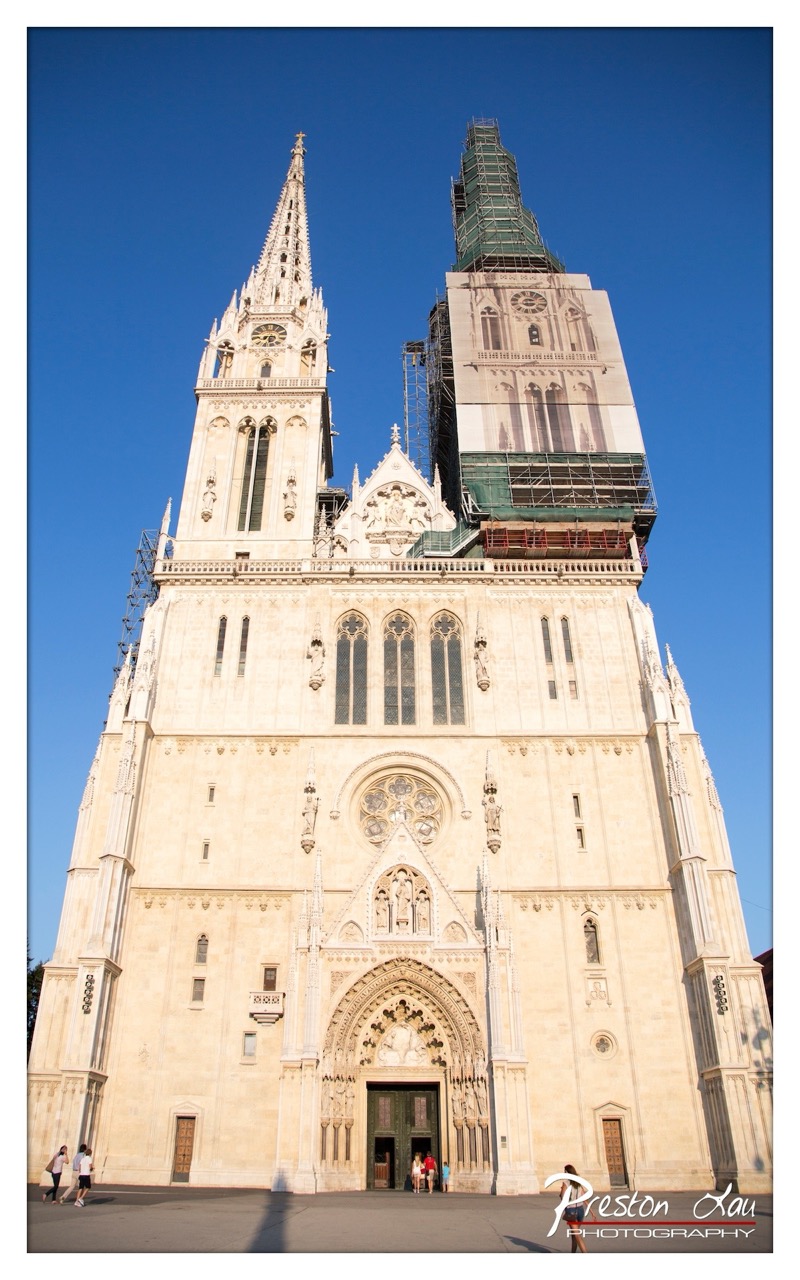

1. Overall Rating (0–10) — 7.5
This photograph captures the grandeur of a Gothic cathedral under a vibrant blue sky, juxtaposing architectural splendor with the quiet presence of ongoing restoration. The low-angle perspective emphasizes the building’s verticality and intricate stonework, while the contrast between the completed spire and the scaffolded tower adds a narrative of time and preservation. Though the image is visually striking, the heavy scaffolding on the right slightly disrupts the composition’s harmony, grounding it in the present rather than allowing it to fully evoke the cathedral’s historical majesty.
2. Composition (0–10) — 7.0
The low-angle shot enhances the cathedral’s imposing scale, with the two towers framing the image symmetrically. However, the scaffolding on the right creates an imbalance, drawing the eye away from the central symmetry and disrupting the visual flow.
3. Lighting (0–10) — 8.0
The bright, direct sunlight highlights the texture and detail of the stone facade, casting subtle shadows that accentuate the Gothic elements. The clear blue sky provides a clean, high-contrast backdrop that makes the white stone pop.
4. Color & Tone (0–10) — 7.5
The warm, golden tones of the limestone contrast beautifully with the deep blue sky, creating a visually rich palette. The slight warmth of the light enhances the stone’s texture, while the neutral tones of the scaffolding provide a subtle industrial counterpoint.
5. Creativity (0–10) — 7.0
The inclusion of the scaffolding introduces a modern narrative into a historical setting, offering a unique commentary on preservation and continuity. While the concept is strong, the execution leans toward documentation rather than artistic interpretation.
6. Technical Quality (0–10) — 8.5
The image is sharp and well-focused, with excellent detail in the architectural elements. The exposure is balanced, and the clarity of the stonework and structural lines is impressive.
7. Emotional Impact (0–10) — 7.0
The photograph evokes a sense of awe and reverence for the cathedral’s scale and craftsmanship, while the visible restoration work adds a layer of human connection and ongoing care. It invites contemplation on time, heritage, and the passage of generations.
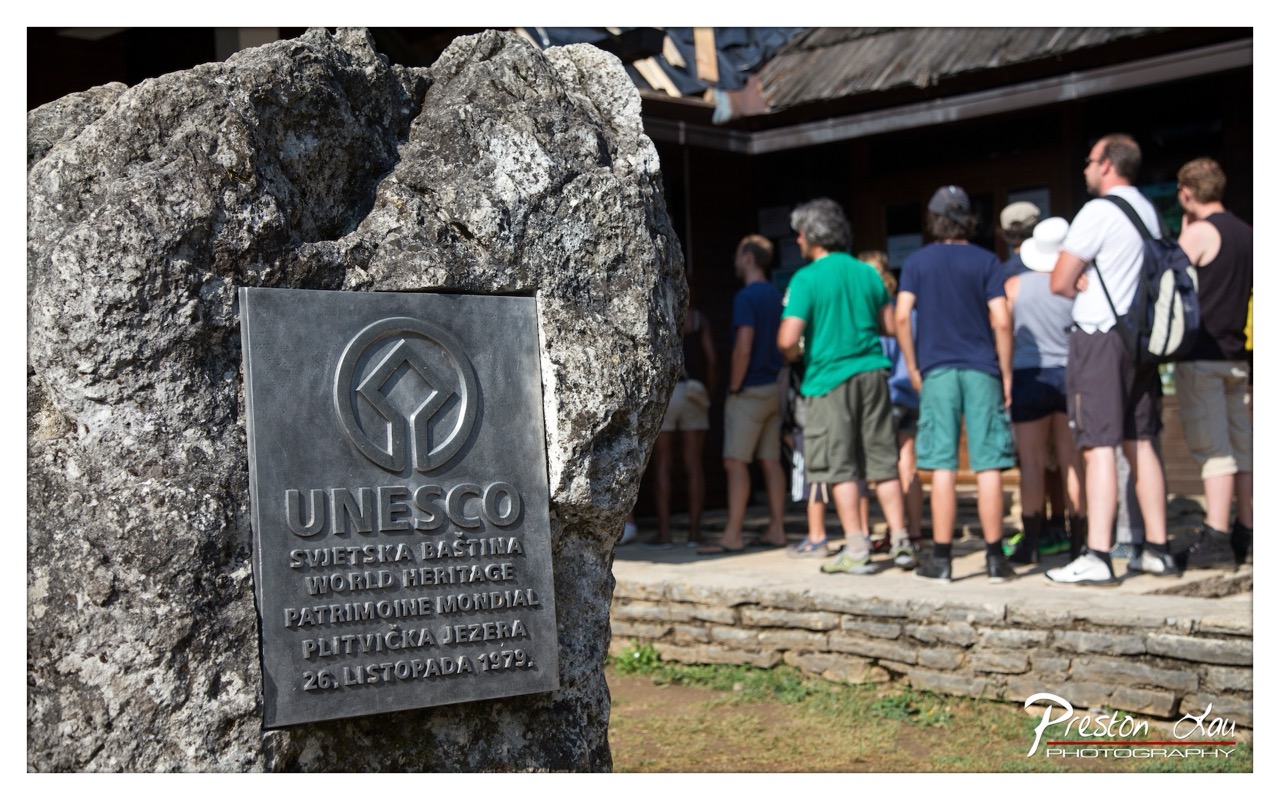

1. Overall Rating (0–10) — 7.0
This photograph captures a moment of cultural reverence at a UNESCO World Heritage site, where the juxtaposition of human presence and historical marker conveys a sense of collective memory. The foreground plaque, sharp and detailed, anchors the image with authority, while the blurred figures in the background suggest a living tradition—tourists gathered in quiet contemplation. The lighting is strong and natural, emphasizing texture and form, though the shallow depth of field slightly isolates the scene from its full environmental context.
2. Composition (0–10) — 7.5
The framing places the UNESCO plaque prominently in the left foreground, creating a strong visual anchor, while the queue of visitors in the background adds narrative depth. The diagonal line of the stone wall guides the eye toward the group, enhancing balance. However, the composition feels slightly off-center, with the right side carrying more visual weight due to the cluster of figures.
3. Lighting (0–10) — 8.0
Bright, direct sunlight highlights the texture of the rock and the engraved plaque, enhancing legibility and visual interest. The contrast between the well-lit foreground and the shaded background adds depth, though some details in the shadowed area of the building are lost. The overall lighting feels natural and reinforces the daytime, outdoor setting.
4. Color & Tone (0–10) — 7.0
The palette is grounded in earthy tones—grays of the stone, muted greens and blues of the visitors’ clothing—creating a harmonious and subdued atmosphere. The natural color balance enhances realism, though the overall tone leans slightly cool, possibly due to the midday sun. The lack of vivid color keeps the focus on the historical significance of the site.
5. Creativity (0–10) — 6.5
The image succeeds in documenting a moment of cultural engagement rather than creating a purely artistic statement. The use of shallow depth of field to separate the plaque from the background is a deliberate choice that draws attention to the site’s significance. While the concept is strong, the execution remains largely observational, with little visual innovation.
6. Technical Quality (0–10) — 8.5
The focus is sharp on the UNESCO plaque, capturing fine details of the engraving. The exposure is well-balanced, with no obvious overexposed or underexposed areas. The resolution and clarity are high, and the watermark is discreetly placed, preserving the image’s integrity.
7. Emotional Impact (0–10) — 6.0
The photograph evokes a sense of respect and continuity, as visitors gather at a place of global importance. The emotional resonance lies in the quiet dignity of the moment, but the distance created by the shallow focus and the lack of expressive faces in the background keeps the viewer from fully connecting with the human element.
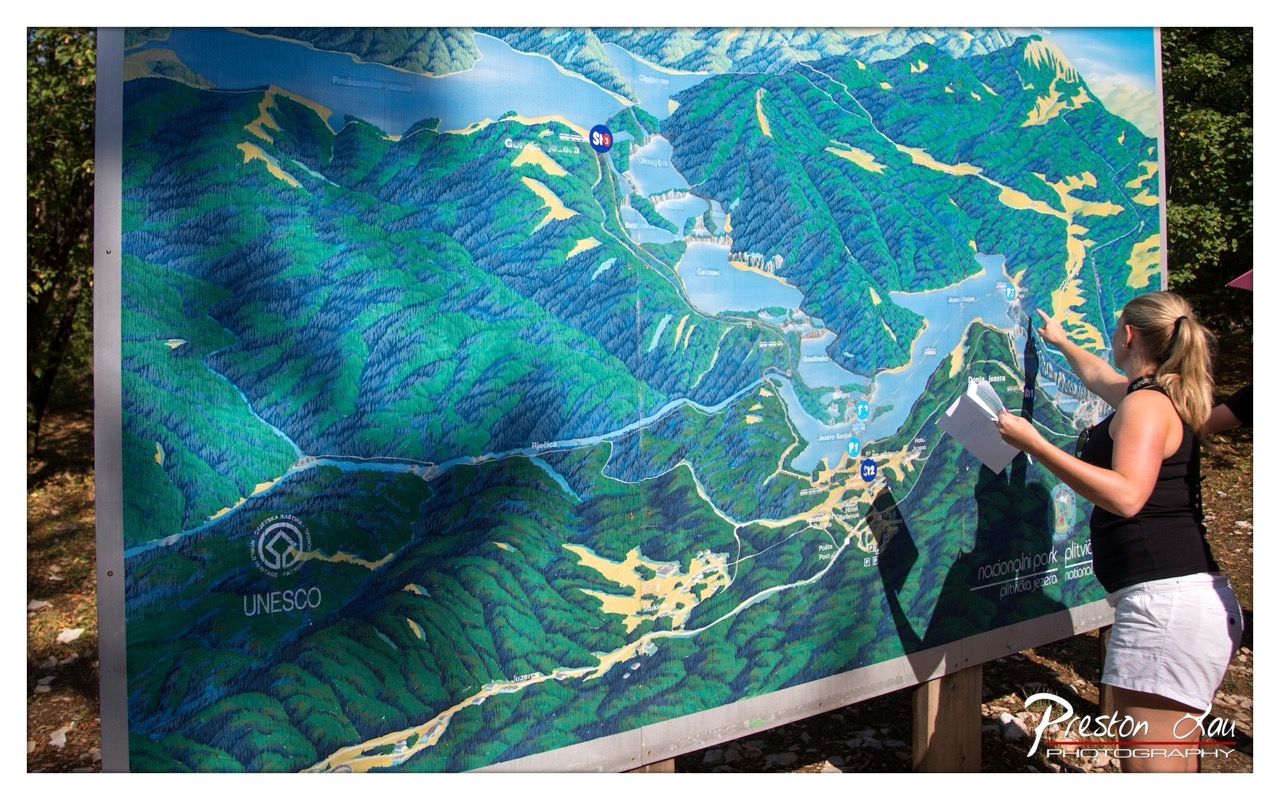

1. Overall Rating (0–10) — 7.0
This photograph captures a moment of quiet discovery, where a traveler engages with a vividly illustrated map of a mountainous national park. The dynamic interplay between the human figure and the colorful, textured landscape on the sign creates a narrative of exploration and scale. While the image is strong in storytelling and composition, the slightly awkward framing and flat lighting prevent it from achieving a more polished aesthetic.
2. Composition (0–10) — 7.5
The subject is placed off-center, drawing the eye toward the map and the woman’s gesture, creating a natural flow. The diagonal of the sign adds energy, while the surrounding foliage frames the scene without overwhelming it. However, the right edge of the frame cuts off the woman’s arm, slightly disrupting the balance.
3. Lighting (0–10) — 6.0
Natural daylight provides even illumination, but it’s somewhat flat and lacks directional warmth, which diminishes the depth of the scene. The shadows cast by the woman and the sign are soft, contributing to a slightly lifeless feel despite the bright outdoor setting.
4. Color & Tone (0–10) — 8.0
The map’s rich greens and blues dominate the frame, creating a vibrant, almost painterly quality that contrasts effectively with the neutral tones of the woman’s clothing and the wooden post. The color palette feels intentional and evocative of the natural environment.
5. Creativity (0–10) — 7.5
The photograph transcends a simple snapshot by using the map as both a literal and metaphorical focal point—symbolizing journey and orientation. The inclusion of the person adds narrative depth, transforming the image into a moment of personal connection with nature.
6. Technical Quality (0–10) — 8.0
The image is sharp and well-focused, with clean detail in the map’s textures and the woman’s features. The exposure is balanced, and the depth of field is appropriate for the subject, though a slightly tighter crop would enhance visual impact.
7. Emotional Impact (0–10) — 7.0
There’s a sense of curiosity and adventure conveyed through the woman’s gesture and focused expression. The image invites the viewer to imagine the journey ahead, evoking feelings of wanderlust and connection to the natural world.
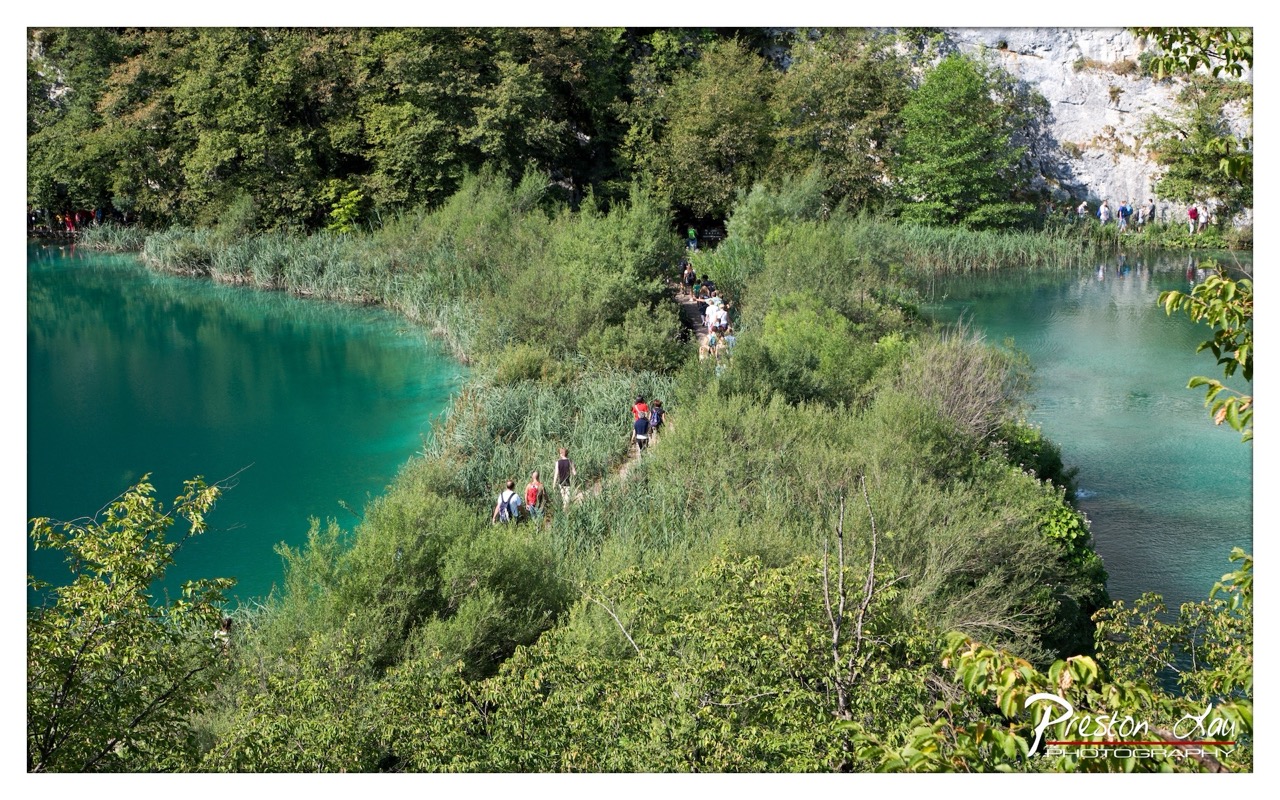

1. Overall Rating (0–10) — 7.5
This photograph captures the serene beauty of a lush, turquoise-lake landscape, where nature and human presence coexist in quiet harmony. The vivid color of the water contrasts strikingly with the dense greenery, while the winding path draws the eye through the frame, inviting contemplation. While the image succeeds in conveying the majesty of the scene, the composition’s naturalism slightly limits its artistic edge, keeping it more documentary than evocative.
2. Composition (0–10) — 7.0
The diagonal path guides the viewer’s eye through the frame, creating a sense of movement and depth. However, the framing feels slightly wide, with the foreground foliage competing for attention and reducing the impact of the central subject.
3. Lighting (0–10) — 8.0
Bright, natural daylight enhances the clarity and saturation of the scene, illuminating the turquoise water and vibrant foliage with even, soft light. The absence of harsh shadows contributes to the image’s tranquil mood.
4. Color & Tone (0–10) — 8.5
The rich emerald and turquoise tones of the water stand out against the varied greens of the vegetation, creating a visually striking palette. The color harmony is strong, with a natural balance that feels both refreshing and immersive.
5. Creativity (0–10) — 7.0
The image is a strong example of landscape documentation, capturing the beauty of a natural site with clarity and presence. While the perspective is familiar, the choice to frame the scene from an elevated angle offers a fresh view of the path and water, adding subtle narrative depth.
6. Technical Quality (0–10) — 8.0
The image is sharp and well-exposed, with fine detail visible in the foliage and water. The focus is consistent across the frame, and the post-processing preserves natural color and contrast without over-editing.
7. Emotional Impact (0–10) — 7.5
The photograph evokes a sense of peace and wonder, inviting the viewer to imagine walking the path through the tranquil, sun-dappled landscape. The presence of people adds a human element that enhances the feeling of shared experience in nature.
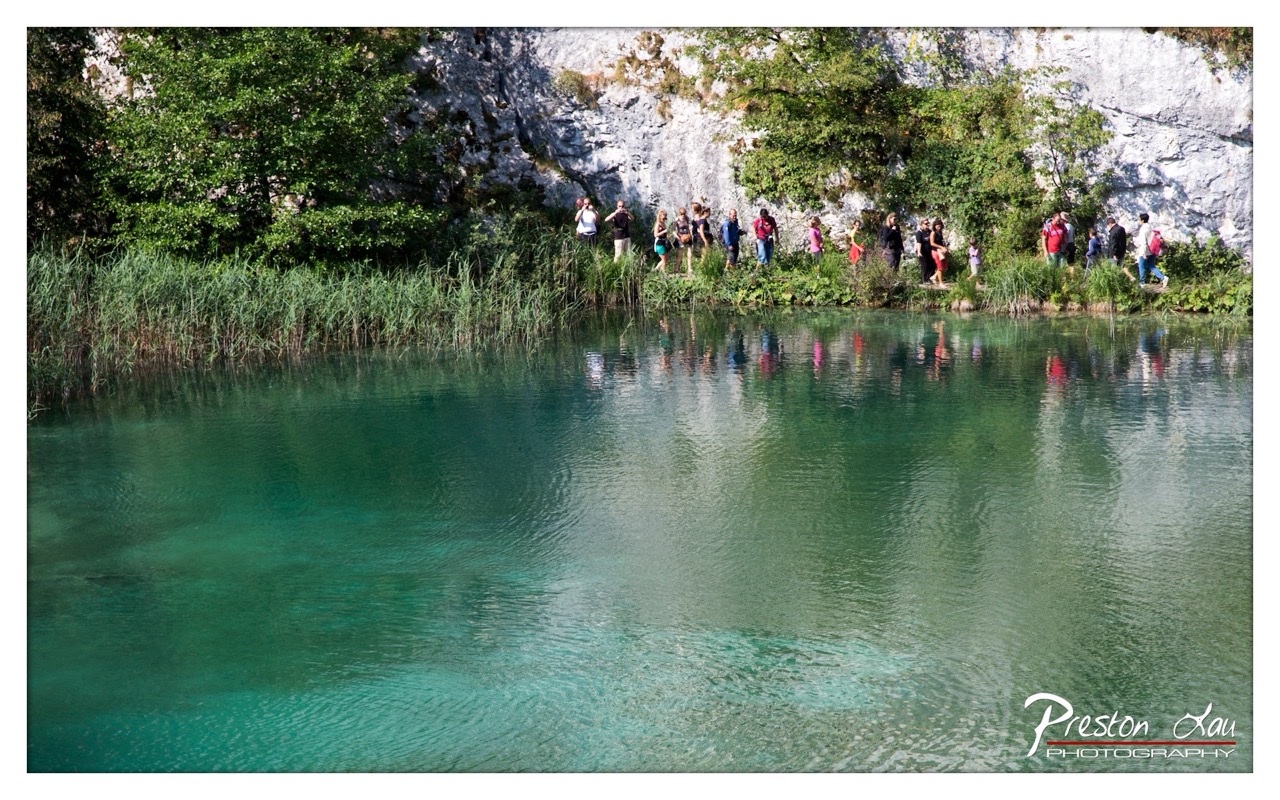

1. Overall Rating (0–10) — 7.0
This photograph captures a serene natural scene where vibrant turquoise water meets a rugged limestone cliff, creating a striking contrast between the organic and the geological. The presence of tourists adds a subtle human element, grounding the image in reality without overwhelming its tranquil beauty. While the composition is visually rich and balanced, the scene’s popularity lends it a slightly staged quality, softening its emotional resonance.
2. Composition (0–10) — 7.5
The frame is well-balanced, with the water occupying the lower two-thirds and the cliff and people forming a natural horizon line. The placement of the group along the edge provides visual interest and scale, while the reeds in the foreground add depth and texture.
3. Lighting (0–10) — 8.0
Natural daylight enhances the clarity and vibrancy of the scene, with soft, diffused light accentuating the water’s color and the texture of the rock face. The reflections on the water’s surface add movement and life, contributing to the image’s overall luminosity.
4. Color & Tone (0–10) — 8.5
The palette is dominated by rich teal and emerald greens, contrasted with the pale gray of the limestone and the varied colors of the visitors’ clothing. The tonal range is dynamic, with a strong sense of saturation that brings the landscape to life while remaining natural and believable.
5. Creativity (0–10) — 7.0
The image is a strong example of landscape photography, capturing a well-known natural wonder with clarity and visual appeal. While the concept is straightforward and widely seen, the photographer’s use of color and composition gives it a distinct aesthetic quality.
6. Technical Quality (0–10) — 8.0
The image is sharp and well-exposed, with fine detail visible in the water’s surface and the rock texture. The focus is consistent across the frame, and the watermark is subtle, not detracting from the visual experience.
7. Emotional Impact (0–10) — 7.5
The scene evokes a sense of awe and tranquility, inviting the viewer to imagine standing at the edge of the lake, surrounded by nature’s quiet majesty. The human presence adds a relatable touch, suggesting shared wonder and connection with the environment.
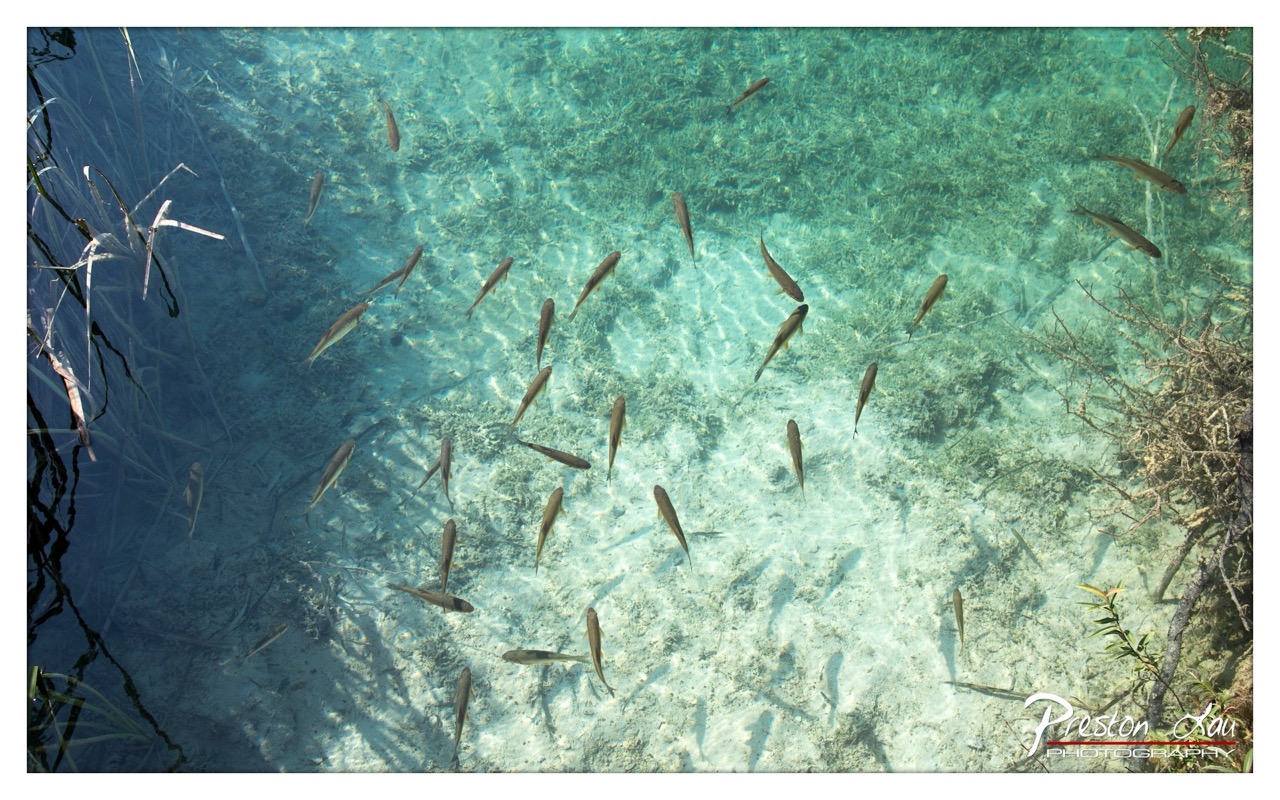

1. Overall Rating (0–10) — 8.0
This photograph captures the serene beauty of a sun-dappled aquatic ecosystem, where the interplay of light, water, and movement creates a sense of tranquil vitality. The clarity of the water and the natural arrangement of the fish evoke a meditative calm, while the framing offers a glimpse into an untouched natural world. The image succeeds in conveying both the precision of nature and the quiet drama of life beneath the surface.
2. Composition (0–10) — 7.5
The overhead perspective provides a balanced, almost symmetrical view, with the fish dispersed in a natural, flowing pattern. The framing includes subtle elements like reeds and branches at the edges, grounding the scene and adding depth without distraction.
3. Lighting (0–10) — 9.0
Sunlight filters through the water with a soft, diffused quality, creating gentle ripples of light and shadow on the sandy bottom. The natural illumination enhances transparency and highlights the movement of the fish, contributing to a luminous, ethereal mood.
4. Color & Tone (0–10) — 8.5
The palette of turquoise, jade, and soft white is both vibrant and harmonious, evoking the cool clarity of a pristine spring. The contrast between the light water and the darker shadows adds depth, while the natural tones reinforce the image’s authenticity.
5. Creativity (0–10) — 8.0
The composition captures a moment of quiet dynamism, transforming a simple underwater scene into a contemplative visual narrative. The photographer’s choice to shoot from above and let the natural arrangement of the fish guide the eye demonstrates a strong sense of observation and intent.
6. Technical Quality (0–10) — 8.5
The image is sharp and well-exposed, with excellent detail visible in the fish and the textured bottom. The clarity of the water and the absence of distracting noise reflect strong technical execution.
7. Emotional Impact (0–10) — 8.0
The photograph invites quiet reflection, evoking a sense of peace and connection to nature. The viewer is drawn into the stillness of the moment, feeling the gentle pulse of life beneath the surface.
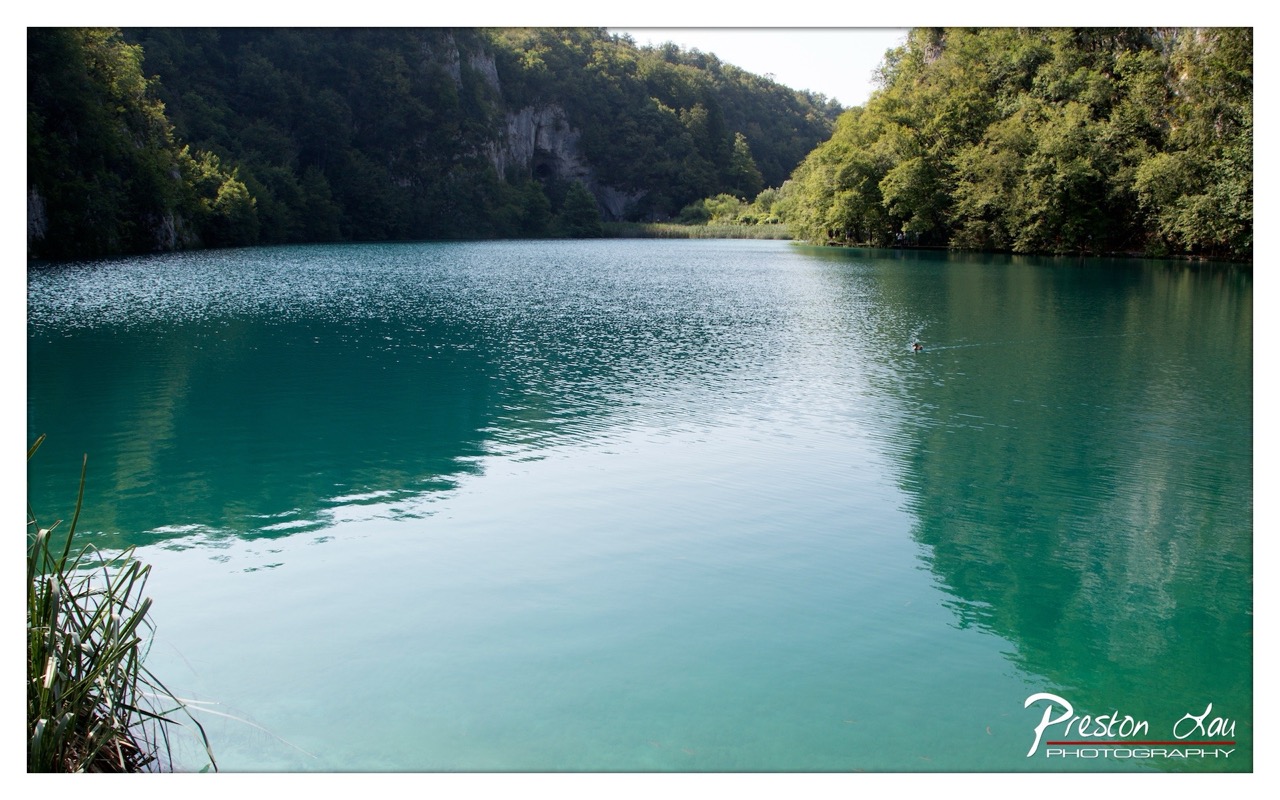

1. Overall Rating (0–10) — 8.0
This photograph captures the serene majesty of a turquoise lake nestled within a lush, forested valley, evoking a sense of untouched natural wonder. The water’s vibrant hue and the rich green foliage create a visually harmonious palette, while the lone figure on the lake adds a subtle human scale without disrupting the tranquility. The image is compelling in its simplicity, though it occasionally leans toward the picturesque, slightly sacrificing raw authenticity for aesthetic polish.
2. Composition (0–10) — 7.5
The frame is well-balanced, with the lake’s gentle curve drawing the eye into the scene. The inclusion of the foreground reeds provides depth, while the central placement of the distant figure offers a focal point. The left and right banks of the lake create a natural frame, enhancing the sense of enclosure and intimacy.
3. Lighting (0–10) — 8.0
Soft, diffused daylight enhances the water’s luminous quality, with subtle reflections adding texture and movement. The lighting is even and natural, casting gentle shadows that define the contours of the cliffs and trees without harsh contrasts.
4. Color & Tone (0–10) — 8.5
The rich teal of the water contrasts beautifully with the deep forest greens, creating a vivid yet cohesive palette. The tones are well-saturated without appearing oversharpened, and the overall color harmony supports the image’s tranquil mood.
5. Creativity (0–10) — 7.0
While the subject is inherently beautiful, the approach is more observational than experimental. The photographer captures the scene with clarity and respect, but there’s little stylistic risk or narrative innovation—this is a strong landscape image, but not a bold artistic statement.
6. Technical Quality (0–10) — 8.5
The image is sharp and detailed, with excellent clarity in both the water and foliage. The exposure is well-managed, and the focus is consistent throughout, suggesting a high level of technical proficiency.
7. Emotional Impact (0–10) — 8.0
The photograph conveys a deep sense of peace and awe, inviting the viewer to pause and reflect. The stillness of the water and the quiet presence of the lone swimmer evoke a meditative calm, making the image emotionally resonant and memorable.
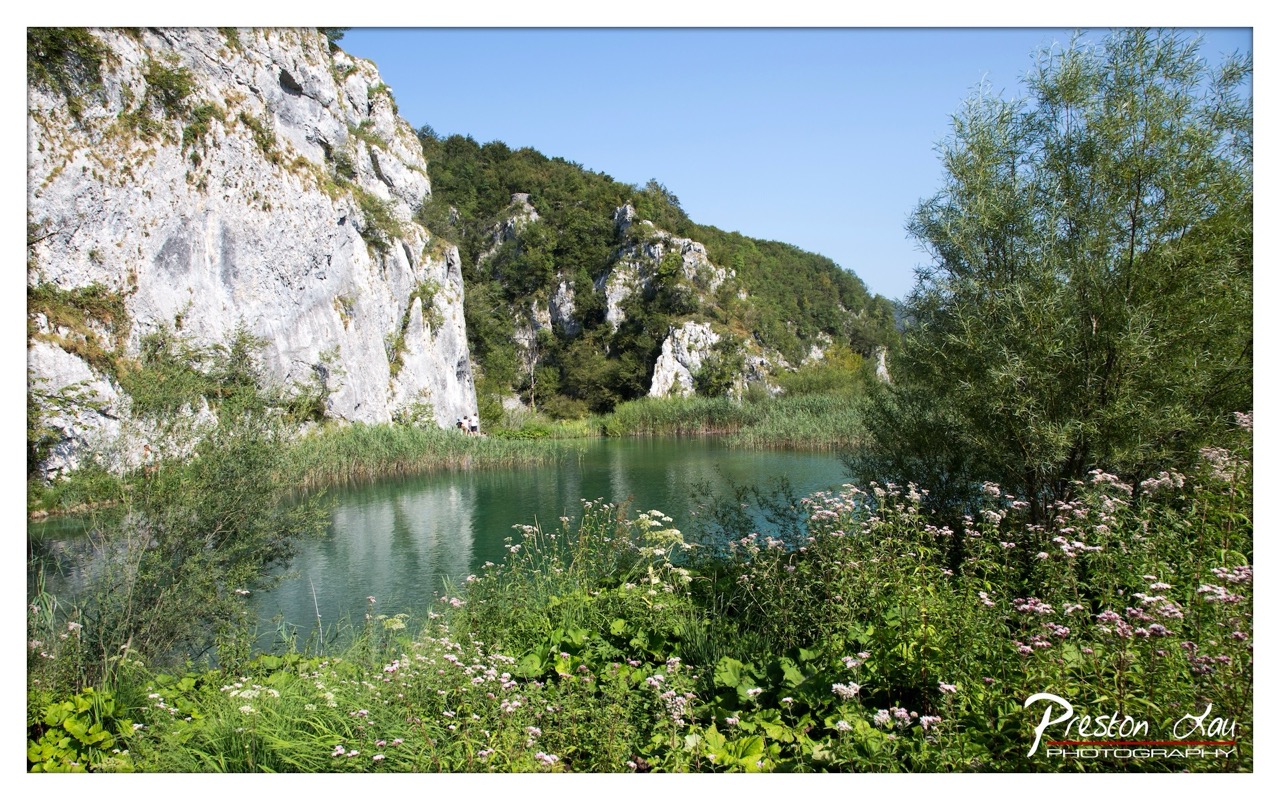

1. Overall Rating (0–10) — 8.0
This photograph captures a serene and sun-drenched natural landscape, where the interplay of rock, water, and vegetation evokes a sense of untouched wilderness. The composition draws the eye into the scene with a well-balanced blend of foreground texture and distant scale, while the vibrant greens and blues lend a refreshing clarity. Though the image is technically strong, its emotional depth is slightly restrained by the lack of human presence, leaving the scene feeling more picturesque than deeply personal.
2. Composition (0–10) — 8.0
The frame is anchored by the large cliff on the left, which creates a natural leading line toward the distant lake, while the foreground foliage adds depth and layers. The placement of the lake as the central focus ensures visual harmony, though the right side feels slightly weighted by the dense tree.
3. Lighting (0–10) — 9.0
Bright, direct sunlight enhances the scene’s clarity and saturation, casting subtle shadows that define the cliff’s texture and highlight the water’s reflective surface. The clear blue sky provides a clean backdrop, contributing to the image’s crisp, airy feel.
4. Color & Tone (0–10) — 8.5
The palette is rich and natural, with vivid emerald greens and deep blues that contrast beautifully against the pale limestone. The soft pink wildflowers add a delicate pop of color, enhancing the scene’s organic charm without appearing artificial.
5. Creativity (0–10) — 7.5
While the image is grounded in traditional landscape aesthetics, the thoughtful framing and color balance elevate it beyond a simple snapshot. The inclusion of the distant figures adds a subtle narrative element, hinting at human scale and exploration within the vastness.
6. Technical Quality (0–10) — 9.0
The photograph is sharp and detailed throughout, with excellent focus on both foreground and background elements. The exposure is well-managed, preserving texture in the rock and foliage without overexposing the sky.
7. Emotional Impact (0–10) — 7.0
The image conveys a peaceful, contemplative mood, inviting quiet reflection. The sense of isolation and natural beauty is strong, though the absence of a strong emotional focal point or human connection keeps the viewer from fully immersing in the scene’s emotional resonance.


1. Overall Rating (0–10) — 7.5
This image captures a serene underwater moment, where a duck glides gracefully through crystal-clear water, surrounded by silhouetted fish. The juxtaposition of the duck’s earthy tones against the cool, turquoise backdrop creates a tranquil, almost dreamlike atmosphere. While the clarity and color harmony are strong, the image slightly loses impact due to a lack of dynamic tension between the subject and its environment.
2. Composition (0–10) — 7.0
The duck is well-placed off-center, creating a natural focal point, and the scattered fish add depth and movement. However, the background elements are slightly too uniform, which reduces visual interest and makes the composition feel somewhat static.
3. Lighting (0–10) — 8.0
The lighting is soft and diffused, likely from overhead sunlight filtering through water, which enhances the clarity of the scene and creates a gentle glow around the duck. The exposure is balanced, preserving detail in both the subject and the water.
4. Color & Tone (0–10) — 8.0
The palette is harmonious, with a cool teal base complemented by the warm browns and greens of the duck. The contrast between the subject and the background is effective, enhancing the sense of depth and clarity.
5. Creativity (0–10) — 7.5
The underwater perspective is unique and engaging, transforming a common subject into something extraordinary. The combination of the duck and fish in this aquatic setting offers a fresh, narrative-driven approach, though the concept is more observational than conceptual.
6. Technical Quality (0–10) — 8.5
The image is sharp, with excellent detail in the duck’s feathers and clear visibility of the fish. The water’s clarity and the clean, crisp focus indicate strong technical execution and post-processing control.
7. Emotional Impact (0–10) — 7.0
The photograph evokes a sense of calm and wonder, inviting the viewer into a quiet, hidden world beneath the surface. While it doesn’t elicit strong emotion, it successfully captures a moment of peaceful coexistence in nature.
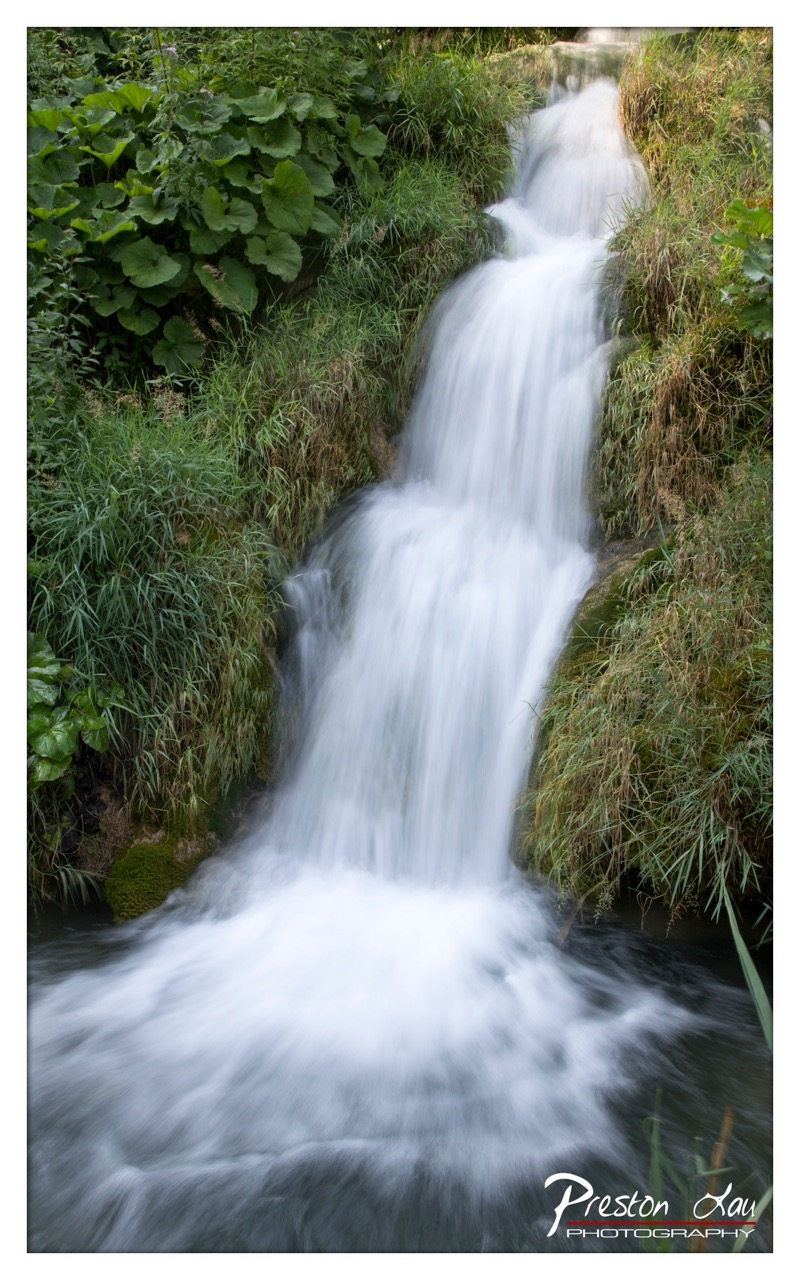

1. Overall Rating (0–10) — 8.0
This photograph captures the serene motion of a small waterfall cascading through lush greenery, evoking a sense of calm and natural rhythm. The long exposure transforms the water into a soft, ethereal veil, contrasting beautifully with the sharp, vibrant foliage. While the composition is strong and the mood is deeply tranquil, the image’s emotional resonance is slightly tempered by a lack of dynamic depth in the foreground, which keeps the viewer from fully immersing in the scene.
2. Composition (0–10) — 8.0
The waterfall is centered and flows vertically through the frame, guiding the eye naturally from top to bottom. The surrounding foliage frames the subject on both sides, creating a balanced and harmonious composition that emphasizes the waterfall’s path through the landscape.
3. Lighting (0–10) — 7.5
Soft, diffused light enhances the natural tones of the scene, avoiding harsh shadows and preserving detail in both the highlights and shadows. The lighting complements the tranquil mood, with a gentle glow on the water that enhances its silky texture.
4. Color & Tone (0–10) — 8.0
A rich palette of deep greens and earthy browns contrasts beautifully with the cool whites and grays of the flowing water. The color harmony is natural and pleasing, with a subtle tonal range that enhances the organic feel of the environment.
5. Creativity (0–10) — 8.5
The use of a long exposure to render the water as a smooth, flowing stream is a thoughtful and effective choice, transforming a simple natural scene into something more dreamlike. The composition and technique work together to create a meditative visual experience that feels both familiar and artistically refined.
6. Technical Quality (0–10) — 8.5
The image is sharp in the foliage and exhibits excellent clarity, with no visible noise or blur beyond the intentional motion effect. The long exposure was executed with precision, and the depth of field is well-managed, keeping the waterfall and surrounding plants in focus.
7. Emotional Impact (0–10) — 8.0
The photograph evokes a deep sense of peace and connection with nature, inviting the viewer to pause and reflect. The gentle motion of the water and the lush environment combine to create a calming, almost spiritual atmosphere that resonates on a quiet emotional level.
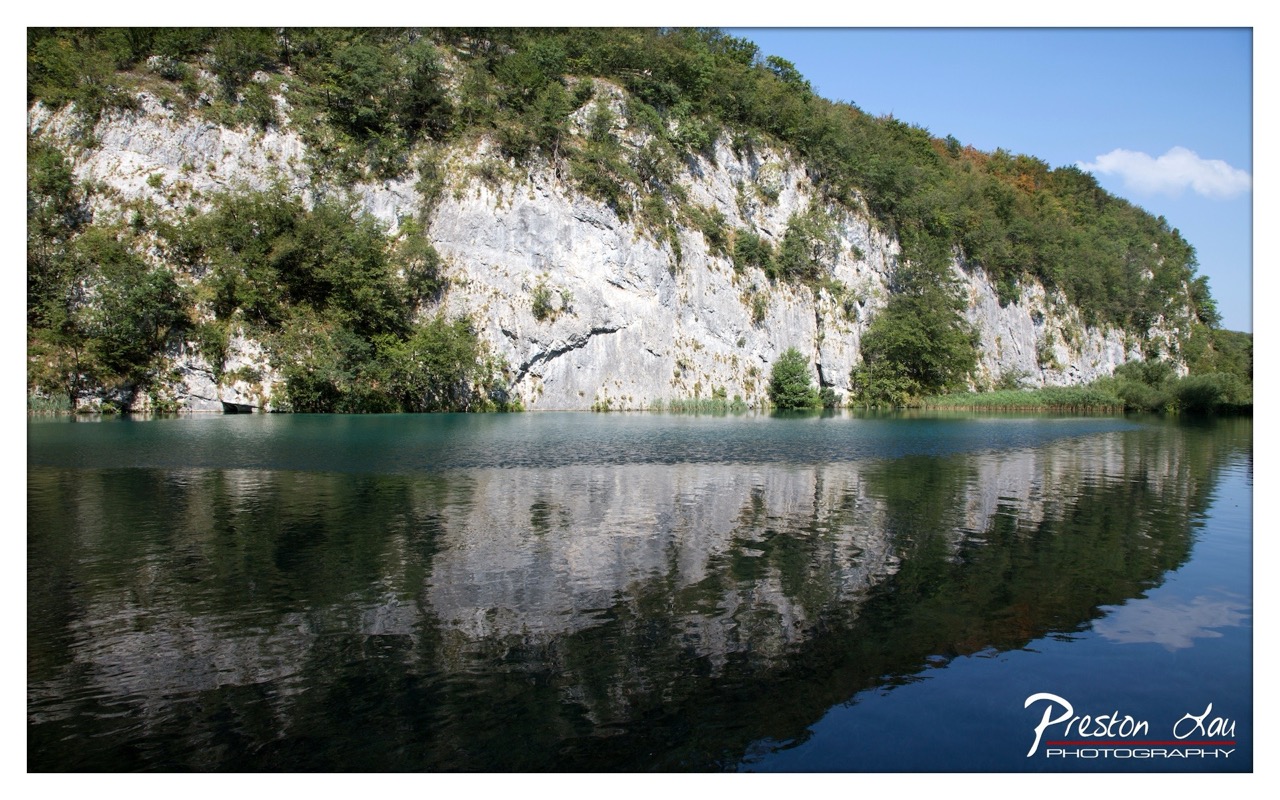

1. Overall Rating (0–10) — 8.0
This photograph captures a serene and majestic natural landscape, where the stillness of the water mirrors the rugged cliff face with near-perfect symmetry. The balance between the earthy textures of the limestone and the vibrant greenery creates a powerful sense of harmony, while the crisp clarity and rich tones lend the image a timeless quality. A slight overexposure in the sky slightly detracts from the overall mood, but the composition’s strength lies in its quiet grandeur and visual unity.
2. Composition (0–10) — 8.5
The horizontal symmetry of the reflection creates a strong, balanced composition, with the cliff face anchoring the frame and the water drawing the eye into the scene. The placement of the rocky outcrop on the left third gives visual weight while allowing space for the expansive reflection, enhancing depth and perspective.
3. Lighting (0–10) — 7.5
Bright, natural daylight enhances the textures of the cliff and the clarity of the water, with soft shadows adding dimension. The sky’s slight overexposure, while diminishing detail in the clouds, contributes to a luminous and airy atmosphere that complements the scene’s openness.
4. Color & Tone (0–10) — 8.0
The palette is rich and cohesive, with deep emerald greens and cool blues in the water creating a striking contrast against the pale gray of the rock. The subtle tonal gradation from the cliff to the reflection adds depth, and the color harmony evokes a sense of calm and natural balance.
5. Creativity (0–10) — 7.0
While the image is grounded in a classic landscape aesthetic, its strength lies in the intentional use of reflection to double the visual impact of the cliff. The photographer’s choice to frame the shot to emphasize symmetry demonstrates a thoughtful approach, transforming a familiar scene into something contemplative and immersive.
6. Technical Quality (0–10) — 8.5
The image is sharp and well-focused, with excellent detail in both the cliff and the water’s surface. The dynamic range is strong, preserving texture and tonal variation, though the overexposed sky reveals a minor technical limitation.
7. Emotional Impact (0–10) — 8.5
The stillness of the water and the quiet majesty of the cliff evoke a profound sense of peace and awe. The symmetry and reflection invite introspection, creating an emotional resonance that is both calming and deeply moving.
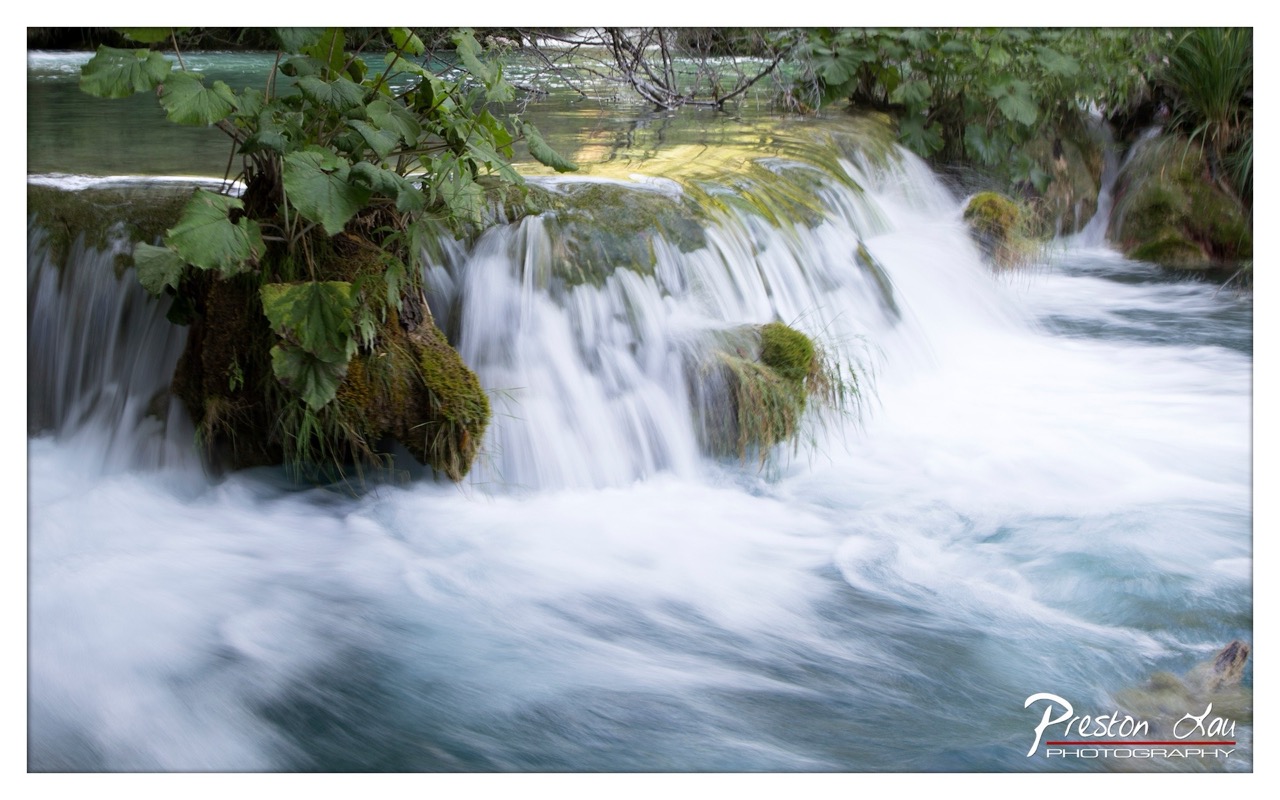

1. Overall Rating (0–10) — 8.0
This photograph captures the serene, flowing energy of a small waterfall with a dreamlike quality, where motion and stillness coexist in harmony. The long exposure transforms the water into a soft, ethereal cascade, while the vibrant green foliage provides a grounding contrast that enhances the natural beauty. While the composition is strong and evocative, the image could benefit from more dynamic tonal range to deepen its visual impact.
2. Composition (0–10) — 7.5
The framing balances the cascading water and the moss-covered rocks effectively, with the plant in the foreground adding depth and leading the eye into the scene. The diagonal flow of water guides the viewer’s gaze naturally, though the right side feels slightly underdeveloped, creating an imbalance in visual weight.
3. Lighting (0–10) — 7.0
The lighting is soft and diffused, likely from an overcast sky, which enhances the smooth texture of the water and minimizes harsh reflections. The subtle interplay of light on the moss and water creates a gentle glow, though the scene could benefit from slightly more directional light to add dimension.
4. Color & Tone (0–10) — 7.5
The palette is rich with cool blues and vibrant greens, creating a refreshing, natural harmony. The tonal contrast between the white water and the darker rocks adds depth, though the overall tone leans slightly flat, limiting the sense of luminosity.
5. Creativity (0–10) — 8.0
The use of long exposure to render the water as a silky, flowing form is both technically skillful and artistically expressive. The choice to emphasize texture and motion over sharp detail lends the image a contemplative, almost meditative quality.
6. Technical Quality (0–10) — 8.5
The image is sharp where it counts, with excellent control over motion blur and a clean, noise-free capture. The focus is well-managed, and the long exposure technique is executed with precision, showcasing a high level of technical mastery.
7. Emotional Impact (0–10) — 8.0
The photograph evokes a deep sense of tranquility and connection with nature. The fluid motion and lush surroundings invite quiet reflection, creating a moment of calm that resonates emotionally with the viewer.
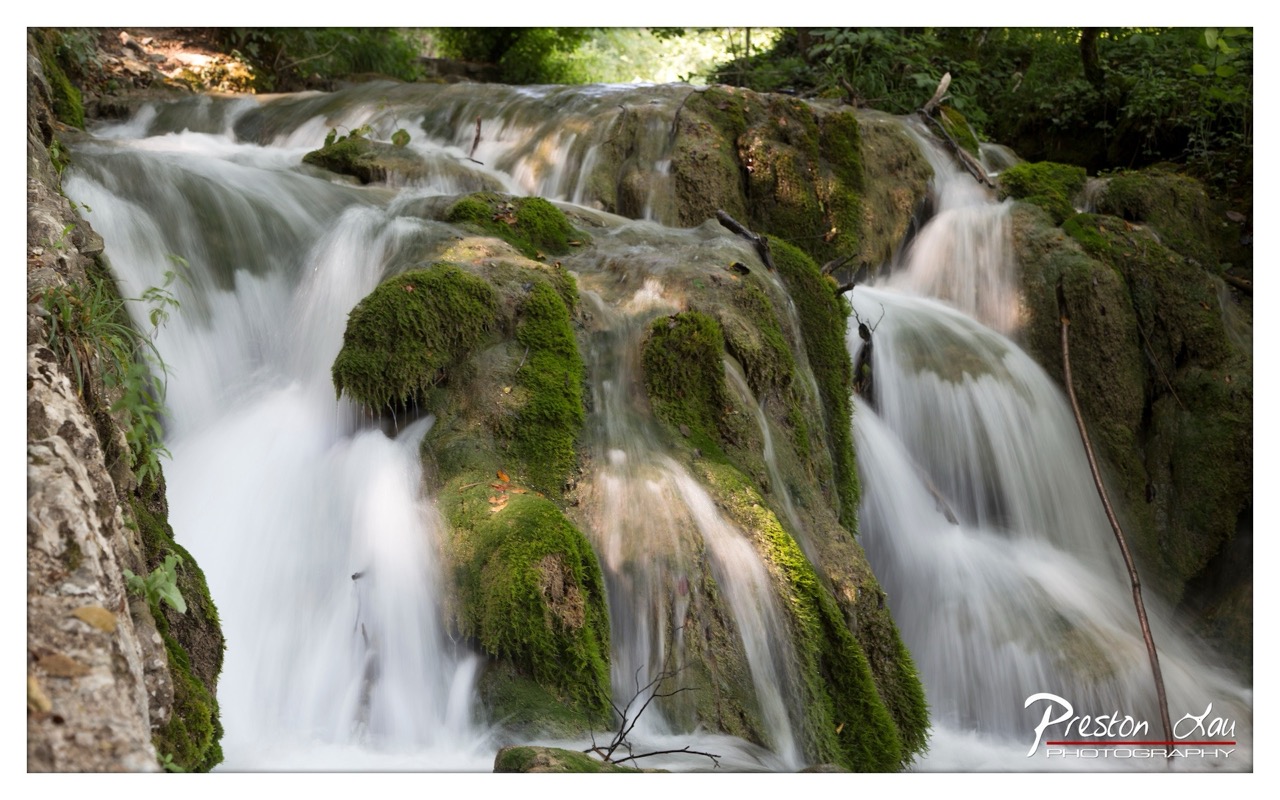

1. Overall Rating (0–10) — 8.0
This photograph captures the serene motion of a forest waterfall with a dreamlike quality, where the interplay of flowing water and lush moss creates a sense of timeless tranquility. The long exposure renders the water as soft, ethereal ribbons, contrasting beautifully with the sharp, vibrant green of the moss-covered rocks. While the image is visually compelling, the slight overexposure in the highlights and the visible watermark slightly detract from its artistic cohesion.
2. Composition (0–10) — 8.0
The waterfall cascades diagonally across the frame, guiding the eye naturally from the top left to the bottom right. The balance between the flowing water and the textured rock formations creates a dynamic yet harmonious structure, with the mossy outcrops acting as natural focal points.
3. Lighting (0–10) — 7.5
Soft, diffused light filters through the forest canopy, enhancing the lush green tones and creating gentle highlights on the water’s surface. The long exposure smooths the light's movement, adding a luminous glow, though some areas in the background are slightly overexposed.
4. Color & Tone (0–10) — 8.5
The palette is rich and natural, dominated by vibrant emerald greens and creamy whites from the water, with subtle earthy tones in the rocks. The contrast between the cool greens and the bright white flow enhances depth and visual interest.
5. Creativity (0–10) — 8.0
The use of a long exposure transforms a simple natural scene into a meditative, almost surreal experience. The photographer’s choice to emphasize motion and texture reflects a strong artistic vision, turning a fleeting moment into a timeless image.
6. Technical Quality (0–10) — 8.5
The image is sharp and well-focused, with excellent clarity in the moss and rock textures. The long exposure is executed skillfully, producing smooth water movement without excessive noise or blur.
7. Emotional Impact (0–10) — 8.5
The photograph evokes a deep sense of peace and connection to nature, inviting the viewer to pause and reflect. The combination of motion, color, and stillness creates a powerful emotional resonance, suggesting solitude and renewal.
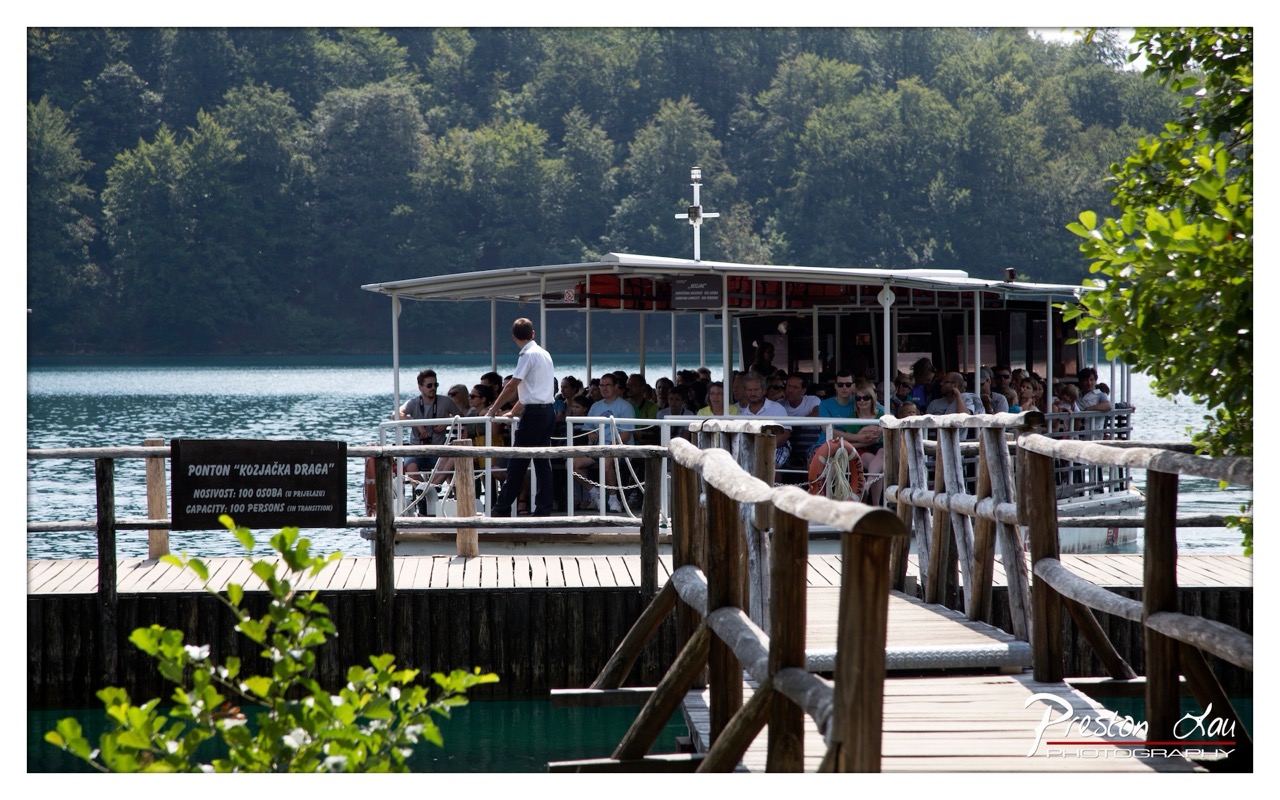

1. Overall Rating (0–10) — 7.0
This photograph captures a serene moment of tourism at a scenic lake, where the calm waters and lush greenery create a sense of peaceful adventure. The composition draws the eye toward the ferry and its passengers, suggesting a journey into a natural haven, though the slightly cluttered foreground and overexposed highlights limit its visual elegance. The image succeeds in conveying a sense of place and movement, grounding the viewer in a moment of quiet travel.
2. Composition (0–10) — 6.5
The wooden railing in the foreground creates a natural frame, guiding the viewer toward the ferry and its passengers. However, the off-center placement of the boat and the overhanging foliage on the right slightly disrupt the balance, while the sign on the left introduces a distracting element.
3. Lighting (0–10) — 7.0
Bright, natural daylight illuminates the scene, enhancing the vivid greens of the trees and the clarity of the water. The sunlight creates a soft contrast between the shaded areas under the ferry and the sunlit passengers, though the sky is slightly overexposed, causing a loss of detail in the brightest parts.
4. Color & Tone (0–10) — 7.5
The palette is rich and harmonious, dominated by lush greens and the cool blue of the water, which together evoke a tranquil, natural setting. The warm tones of the wooden dock add a grounding contrast, and the overall saturation feels natural and inviting.
5. Creativity (0–10) — 6.5
While the photograph captures a compelling moment of everyday travel, its creativity lies more in its documentation than in artistic innovation. The framing and subject matter are familiar, but the interplay of nature and human activity gives it a subtle narrative depth.
6. Technical Quality (0–10) — 8.0
The image is sharp and well-focused, particularly on the ferry and passengers. The exposure is mostly balanced, with only minor overexposure in the sky. The depth of field effectively isolates the subject while keeping the background context.
7. Emotional Impact (0–10) — 6.5
The photograph evokes a sense of calm and curiosity, inviting the viewer to imagine the journey ahead. The presence of people suggests shared experience and connection, yet the distance created by the framing keeps the emotional resonance subtle rather than deeply moving.
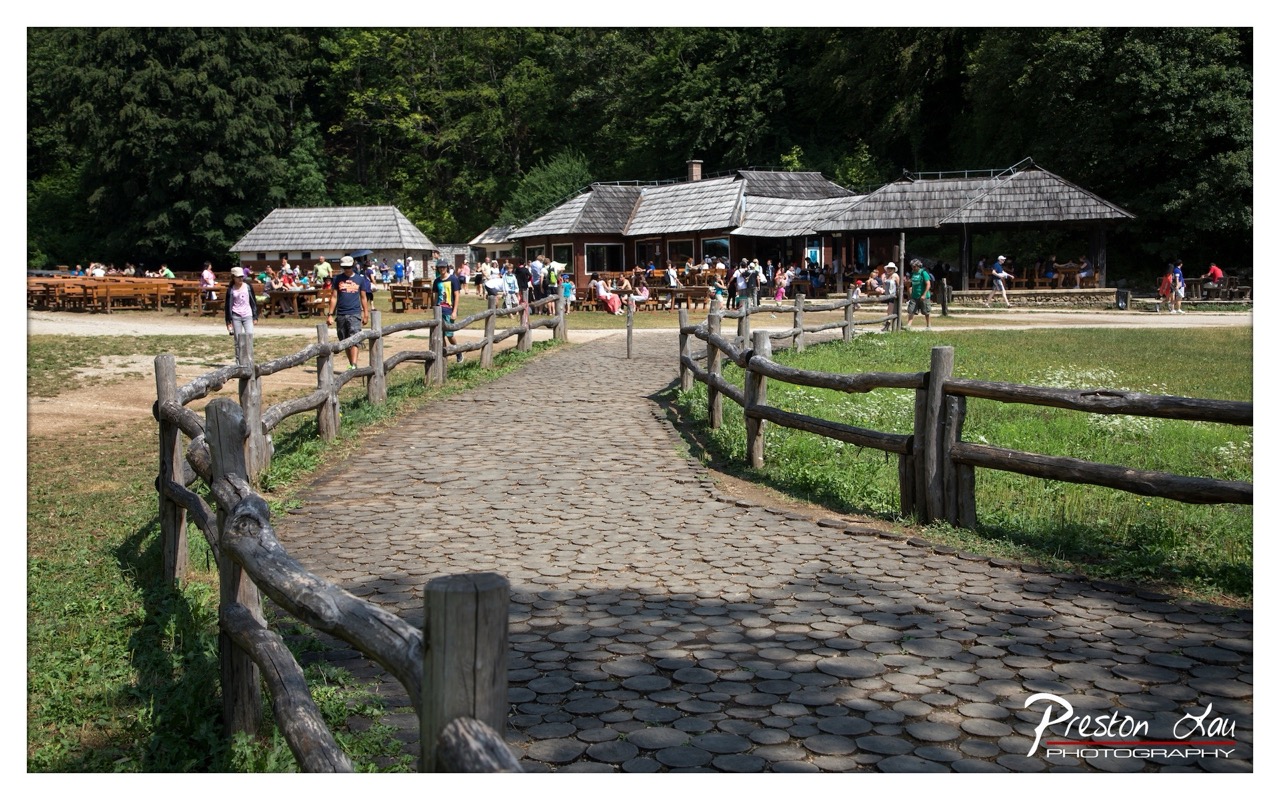

1. Overall Rating (0–10) — 7.0
This photograph captures a lively, rustic gathering in a forested clearing, where the cobblestone path and wooden railings guide the eye toward a bustling communal space. The scene feels authentic and immersive, with natural light enhancing the textures of wood and stone, though the composition’s slight asymmetry and busy background prevent it from achieving greater visual cohesion.
2. Composition (0–10) — 6.5
The leading line of the cobblestone path draws the viewer into the frame, but the off-center placement of the main structures and the scattered figures create a sense of visual clutter. A tighter crop could emphasize the path’s direction and improve balance.
3. Lighting (0–10) — 7.5
Strong, natural sunlight creates dynamic contrast and highlights the textures of the wooden fences and stone pavement. The shadows add depth and help define the space, though some areas in the background are slightly overexposed.
4. Color & Tone (0–10) — 7.0
The palette is rich with earthy browns, greens, and grays, creating a harmonious, naturalistic tone. The colors are vibrant but not oversaturated, and the tonal range supports the outdoor, daytime atmosphere.
5. Creativity (0–10) — 6.5
The image successfully documents a moment of communal life in a scenic setting, but it leans more toward documentation than conceptual storytelling. The use of natural framing and perspective is effective, yet the scene lacks a unique artistic angle.
6. Technical Quality (0–10) — 8.0
The image is sharp and well-focused, with excellent detail in the foreground textures. The exposure is generally balanced, though some highlights in the background show minor loss of detail.
7. Emotional Impact (0–10) — 7.0
The photograph evokes a sense of warmth, community, and peaceful outdoor gathering. The presence of people enjoying a shared space creates a subtle emotional connection, inviting the viewer to imagine themselves walking down the path toward the activity.
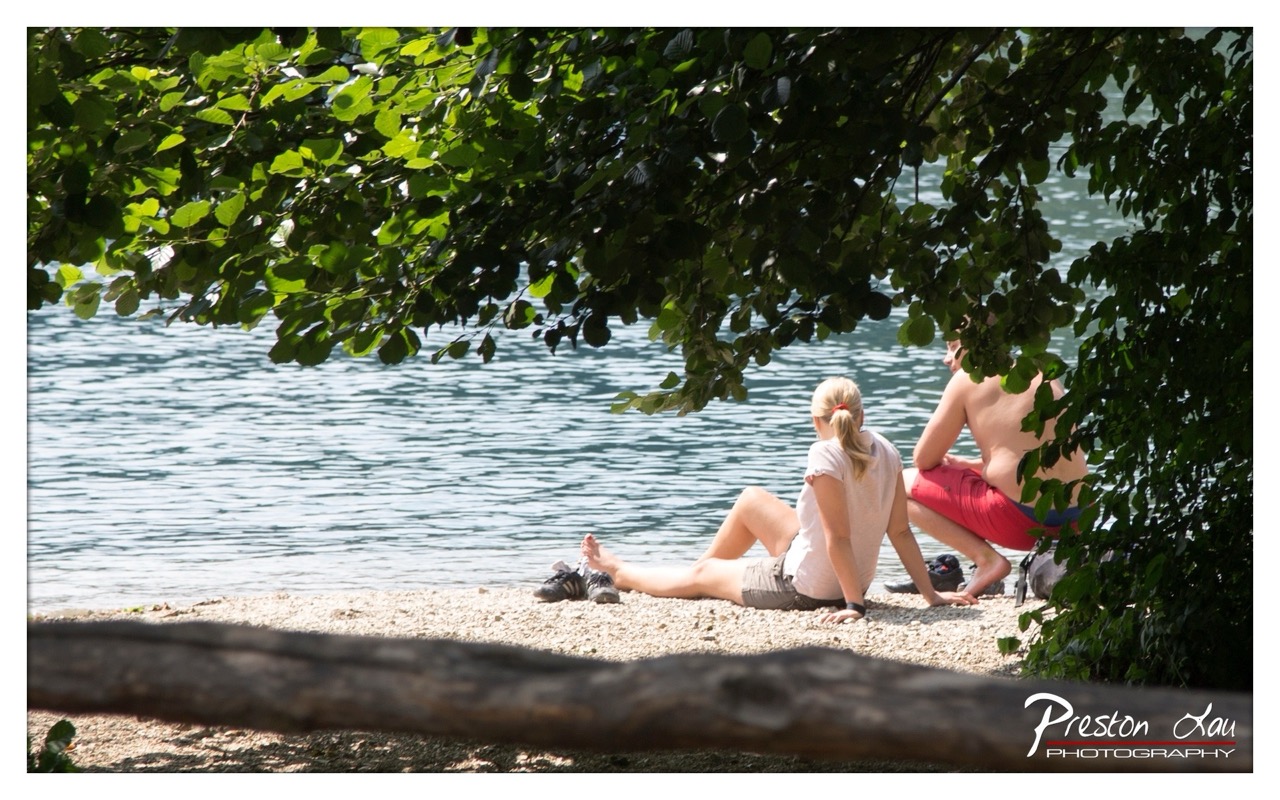

1. Overall Rating (0–10) — 7.0
This photograph captures a quiet, sun-dappled moment by the water, where two people rest beneath the shade of leafy branches, evoking a sense of peaceful solitude. The framing through the foliage creates an intimate, voyeuristic quality, while the natural light and relaxed posture of the subjects convey a genuine moment of leisure. Though the image is visually appealing and well-composed, it lacks a strong narrative or emotional punch, feeling more like a snapshot than a fully realized portrait of a scene.
2. Composition (0–10) — 7.5
The foreground branch and overhanging leaves create a natural frame that draws the eye toward the couple, enhancing depth and narrative context. The subjects are placed off-center, following the rule of thirds, which balances the composition effectively. However, the slightly cluttered foreground and the uneven framing of the figures slightly detract from the visual harmony.
3. Lighting (0–10) — 7.0
Natural sunlight filters through the leaves, creating dappled light and soft shadows that add texture and dimension to the scene. The light enhances the warmth of the moment and highlights the texture of the pebbled shore. While the exposure is well-managed, some areas—particularly the shadows under the foliage—are slightly underexposed, losing detail.
4. Color & Tone (0–10) — 7.0
The palette is dominated by natural greens, blues, and earthy tones, creating a cohesive and calming atmosphere. The contrast between the bright foliage and the calm water adds visual interest. The overall tone is warm and inviting, though the colors lack a bit of vibrancy, giving the image a slightly muted, documentary feel.
5. Creativity (0–10) — 7.5
The photographer’s choice to frame the shot through the branches introduces a unique, voyeuristic perspective that elevates the image beyond a simple landscape. The candid nature of the subjects and the organic composition suggest a thoughtful approach to capturing a fleeting, authentic moment, blending narrative and aesthetics.
6. Technical Quality (0–10) — 8.0
The image is sharp and well-focused, particularly on the subjects, with clean details in the foliage and water. The depth of field is appropriately controlled, keeping the main subjects clear while softly blurring the background. The watermark is professionally placed and does not distract.
7. Emotional Impact (0–10) — 6.5
The image evokes a sense of calm and quiet companionship, inviting the viewer to imagine the warmth of a summer day by the water. While the emotional resonance is present, it remains subtle and restrained, relying more on atmosphere than on a powerful emotional narrative.
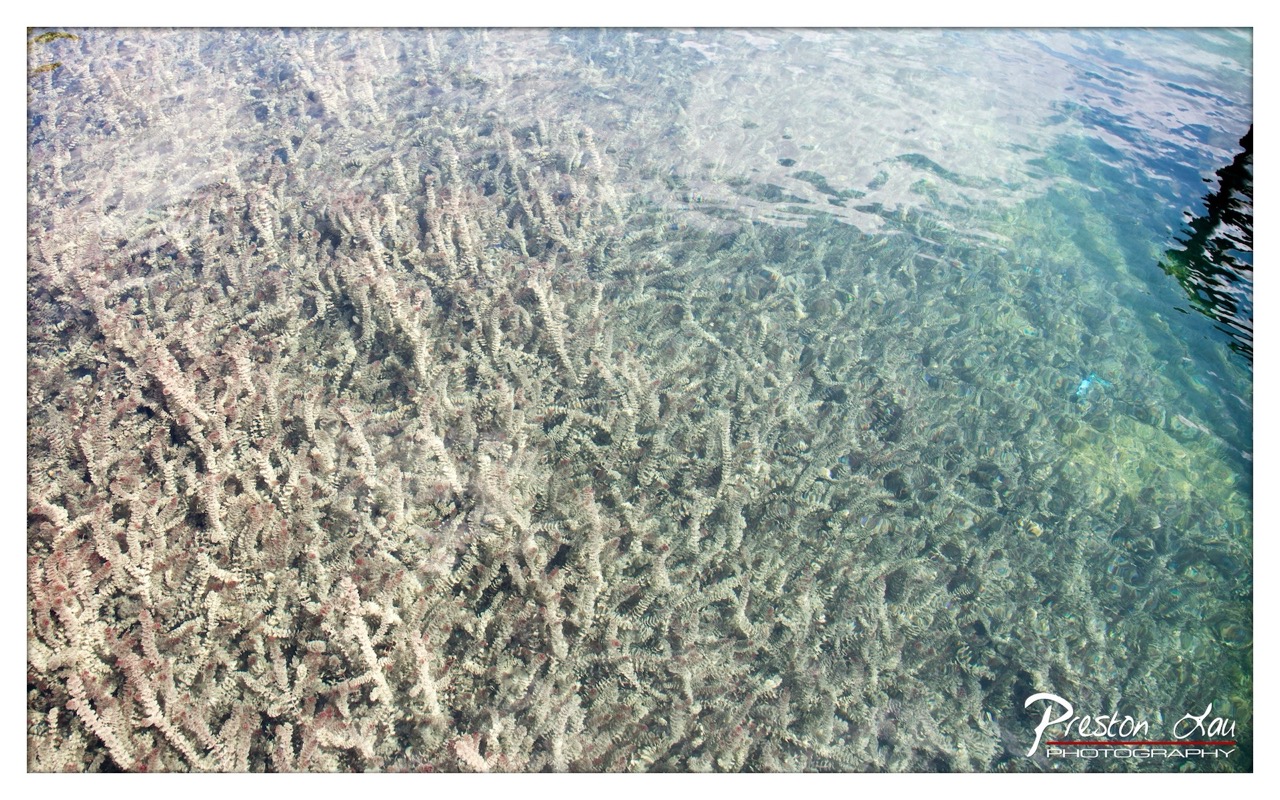

1. Overall Rating (0–10) — 7.0
This photograph captures the quiet complexity of a coral reef beneath clear, sun-dappled water, evoking a sense of serene natural beauty. The intricate textures of the coral are richly detailed, and the play of light through the water creates a dynamic, almost rhythmic pattern. While the image is visually compelling, the overall tone feels slightly overexposed, softening the depth and nuance of the underwater world.
2. Composition (0–10) — 6.5
The frame is dominated by the coral in the lower two-thirds, with the water’s surface and ripples occupying the top portion. The diagonal division creates visual tension, but the lack of a clear focal point or leading line leaves the composition feeling somewhat static and unbalanced.
3. Lighting (0–10) — 7.0
Natural sunlight filters through the water, creating a dappled, luminous effect that enhances the texture of the coral. The bright exposure highlights details but also washes out some of the finer color variation, especially in the upper right, where the water becomes overexposed.
4. Color & Tone (0–10) — 6.5
The palette is a mix of pale greens, blues, and muted pinks, reflecting the natural hues of the reef. While the colors are soft and harmonious, the overall cool tone and high brightness reduce vibrancy, giving the image a slightly flat, faded quality.
5. Creativity (0–10) — 7.0
The photographer captures a rare, intimate glimpse of an underwater environment from a unique vantage point—looking down through the water’s surface. The interplay of light and texture offers a contemplative, almost abstract quality, elevating the image beyond a simple nature snapshot.
6. Technical Quality (0–10) — 7.5
The image is sharp and detailed, with clear focus on the coral formations. The clarity of the water allows for good visibility, though the white balance and exposure control could be refined to preserve more tonal range.
7. Emotional Impact (0–10) — 6.5
The photograph evokes a sense of calm and wonder, inviting the viewer to reflect on the fragile beauty of marine ecosystems. However, the slight overexposure and lack of dramatic contrast prevent a deeper emotional resonance, leaving the viewer observing rather than feeling.
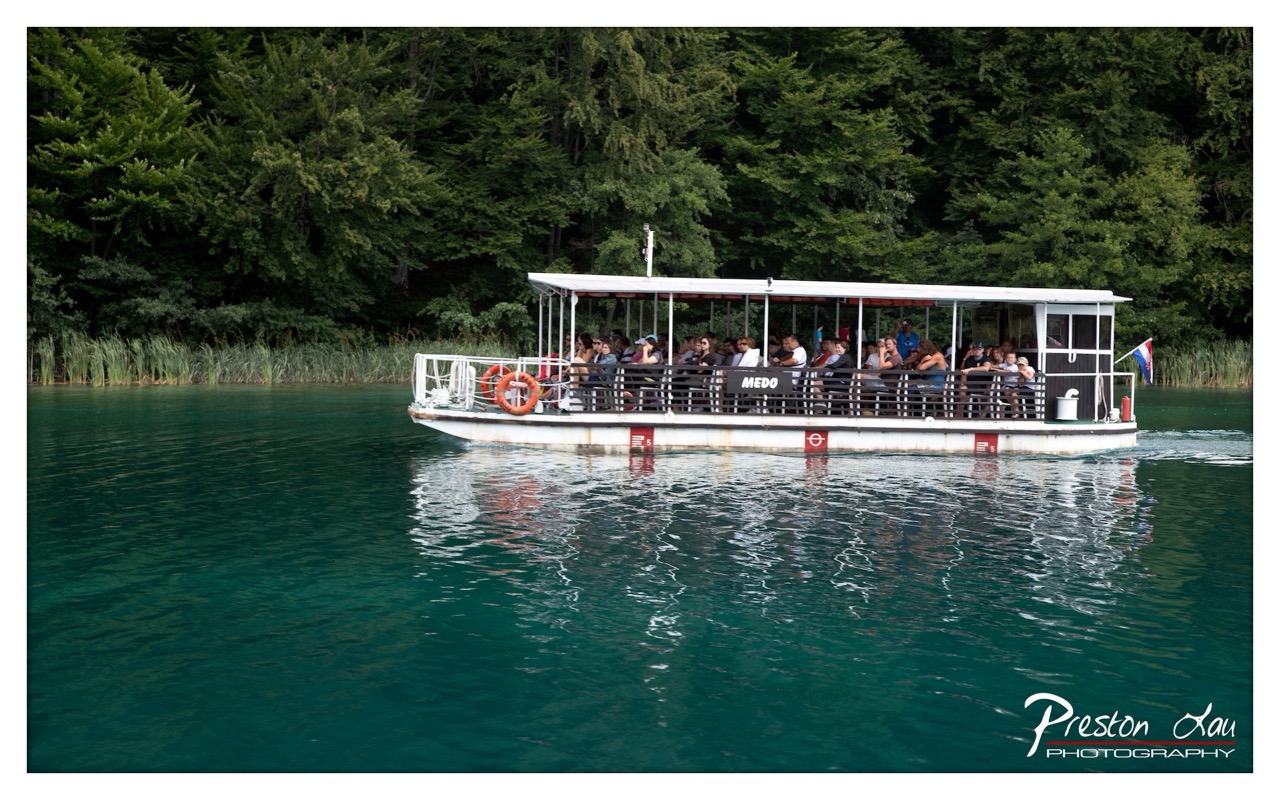

1. Overall Rating (0–10) — 7.5
This photograph captures a serene moment of leisure on a turquoise lake, with a passenger boat gliding through calm waters beneath a dense forest canopy. The rich green tones of the water and foliage create a vivid, almost surreal natural backdrop, while the presence of tourists adds a subtle human element that grounds the scene in reality. The image is visually strong, though the slightly busy composition and muted lighting prevent it from achieving a more transcendent quality.
2. Composition (0–10) — 7.0
The boat is well-centered, creating a balanced focal point, but the wide framing leaves significant empty space in the foreground, which dilutes the impact. The strong horizontal lines of the boat and shoreline guide the eye, yet the composition feels slightly unbalanced due to the lack of a clear narrative anchor.
3. Lighting (0–10) — 6.5
The lighting is soft and diffused, likely from an overcast sky, which evenly illuminates the scene but lacks dramatic contrast. While this preserves detail in the foliage and water, it also flattens the mood, muting the potential for atmospheric depth.
4. Color & Tone (0–10) — 8.0
The vibrant teal of the water contrasts beautifully with the deep greens of the forest, creating a striking and harmonious palette. The colors are rich and saturated without appearing unnatural, enhancing the scene’s natural beauty and giving it a dreamlike quality.
5. Creativity (0–10) — 7.0
The image captures a familiar tourist scene with a fresh, almost cinematic sensibility, leveraging the unique color of the lake to elevate the ordinary into something memorable. The photographer’s choice to frame the boat mid-motion adds a subtle sense of journey and movement.
6. Technical Quality (0–10) — 8.0
The image is sharp and clear, with excellent focus on the boat and its passengers. The water’s surface is rendered with fine texture, and the reflection is crisp, indicating strong technical execution and attention to detail.
7. Emotional Impact (0–10) — 7.5
The photograph evokes a sense of peaceful exploration and quiet wonder, inviting the viewer to imagine themselves on the boat, surrounded by nature. The calmness of the water and the lush environment create a soothing, contemplative mood.
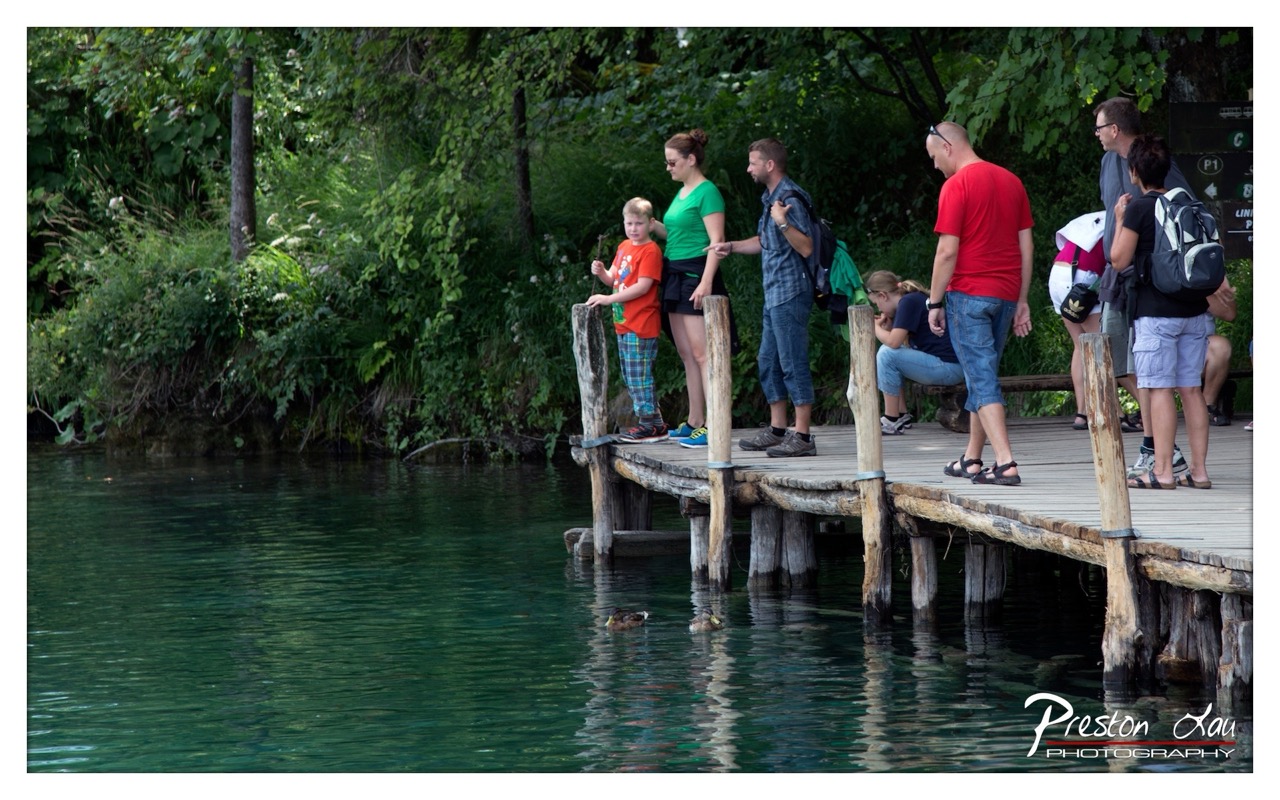

1. Overall Rating (0–10) — 7.0
This photograph captures a serene moment of leisure and connection between people and nature, with a tranquil lake and lush greenery forming a picturesque backdrop. The composition draws the eye naturally along the wooden pier, where a small group of visitors engages with the environment, creating a sense of shared experience. While the scene is pleasant and well-framed, the lack of a strong focal point and slightly flat lighting prevent it from feeling truly dynamic or emotionally resonant.
2. Composition (0–10) — 7.0
The diagonal line of the pier leads the viewer’s eye through the frame, creating a sense of depth and guiding attention toward the people. The placement of figures along the pier provides visual rhythm, though the group’s scattered arrangement introduces slight imbalance.
3. Lighting (0–10) — 6.0
Natural daylight illuminates the scene evenly, but the soft, diffused quality of the light lacks contrast and shadows, resulting in a somewhat flat appearance. The water reflects the light softly, enhancing the calm mood but reducing visual drama.
4. Color & Tone (0–10) — 7.0
The rich, emerald green of the water and surrounding foliage creates a vivid, natural palette. The warm red of the man’s shirt and the child’s orange shirt serve as subtle focal points, adding visual interest without disrupting the overall harmony.
5. Creativity (0–10) — 6.5
The image captures a candid, everyday moment with a quiet elegance. While not highly experimental, it succeeds in conveying a sense of place and human interaction with nature, offering a gentle narrative without overt staging.
6. Technical Quality (0–10) — 8.0
The image is sharp and well-focused, with clear details in both the foreground and background. The exposure is balanced, and the watermark is cleanly placed, indicating careful post-processing.
7. Emotional Impact (0–10) — 6.5
The photograph evokes a sense of peace and quiet contemplation, inviting the viewer to imagine themselves on the dock, enjoying the stillness of the lake. While the emotional connection is subtle, it is grounded in authenticity and the universal appeal of nature and shared moments.
Loading map...